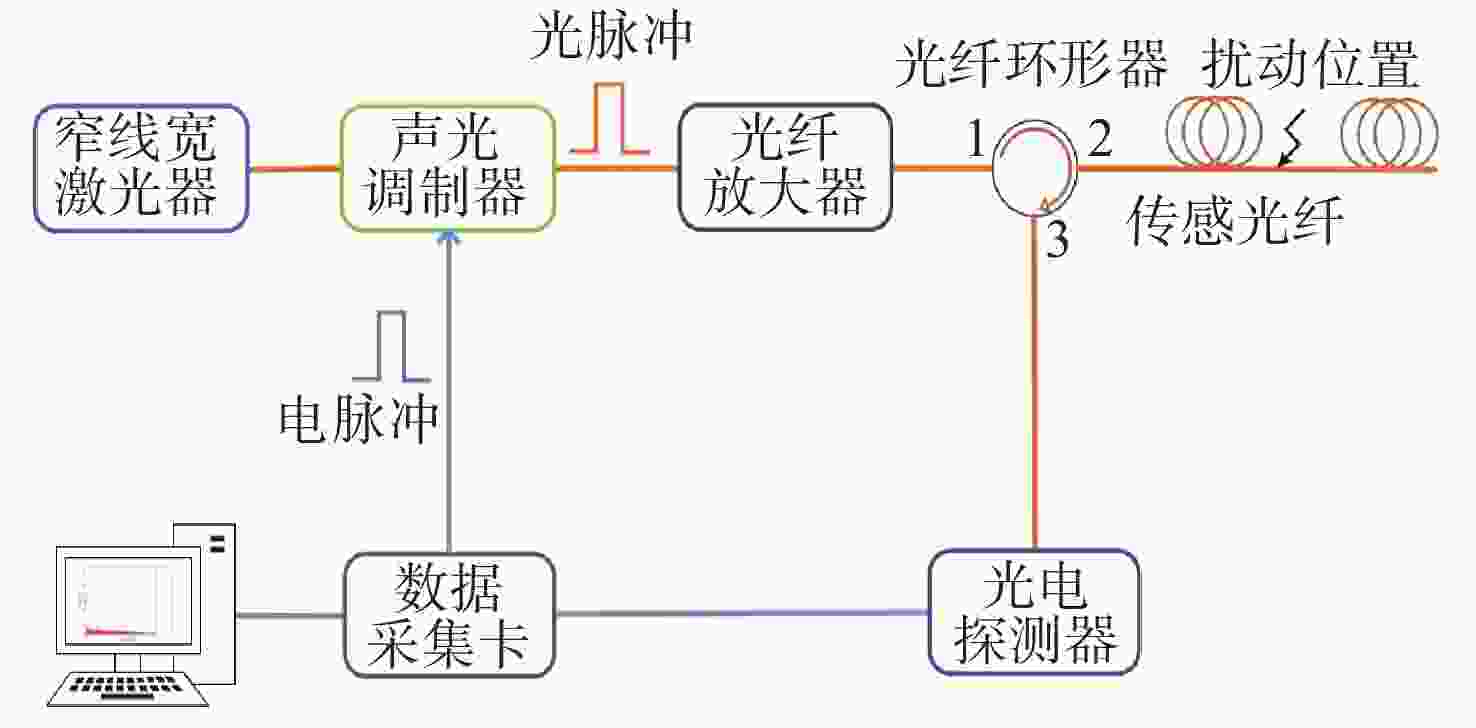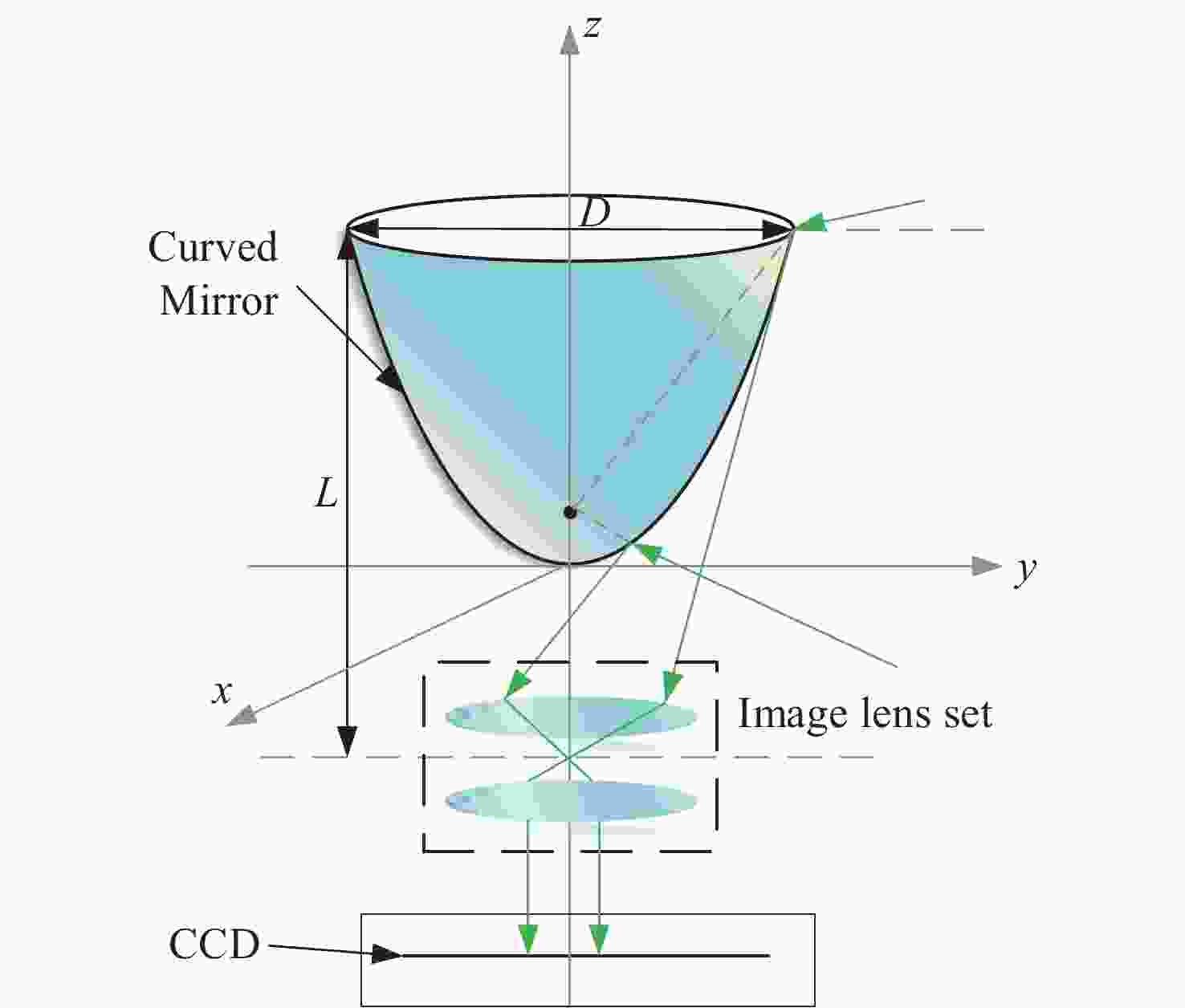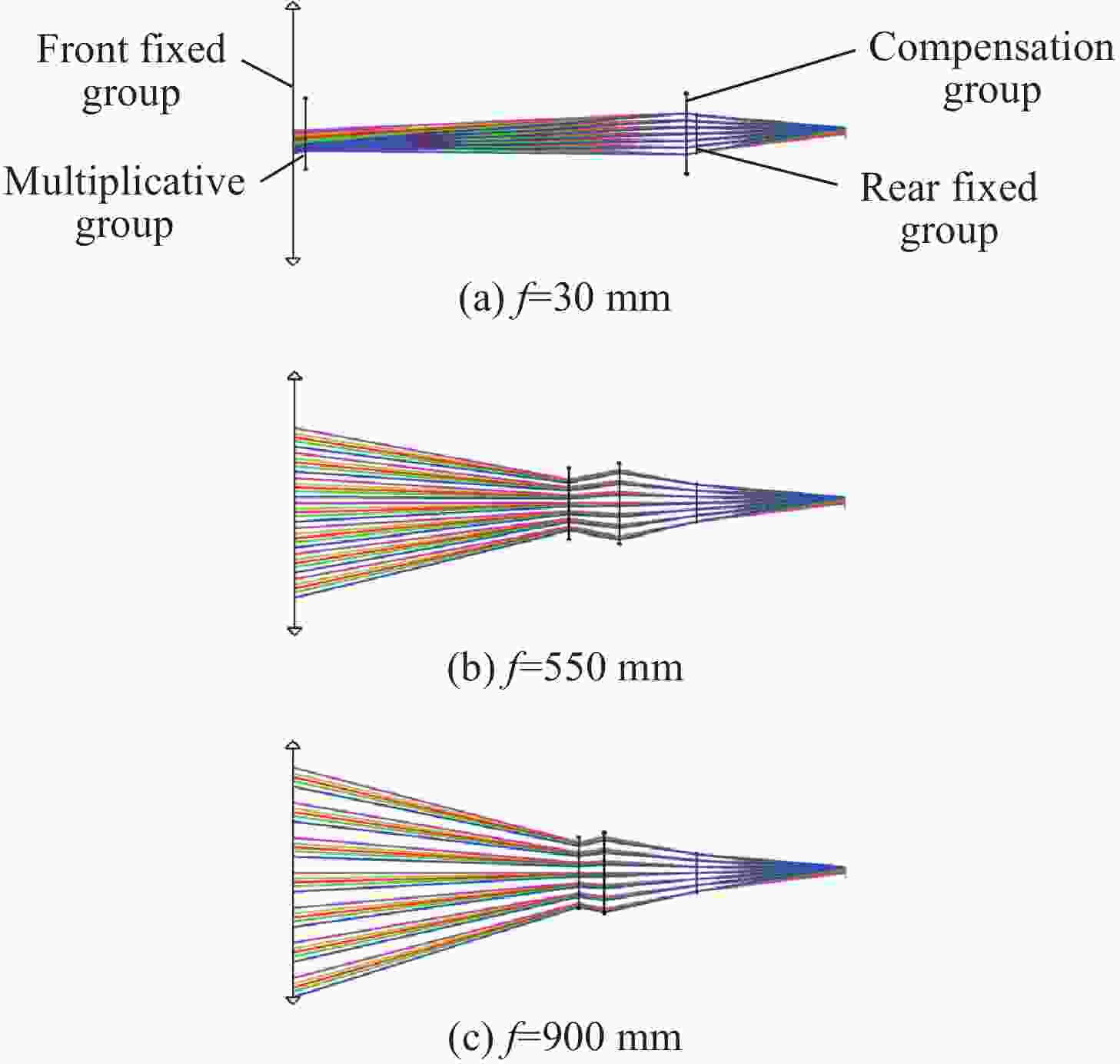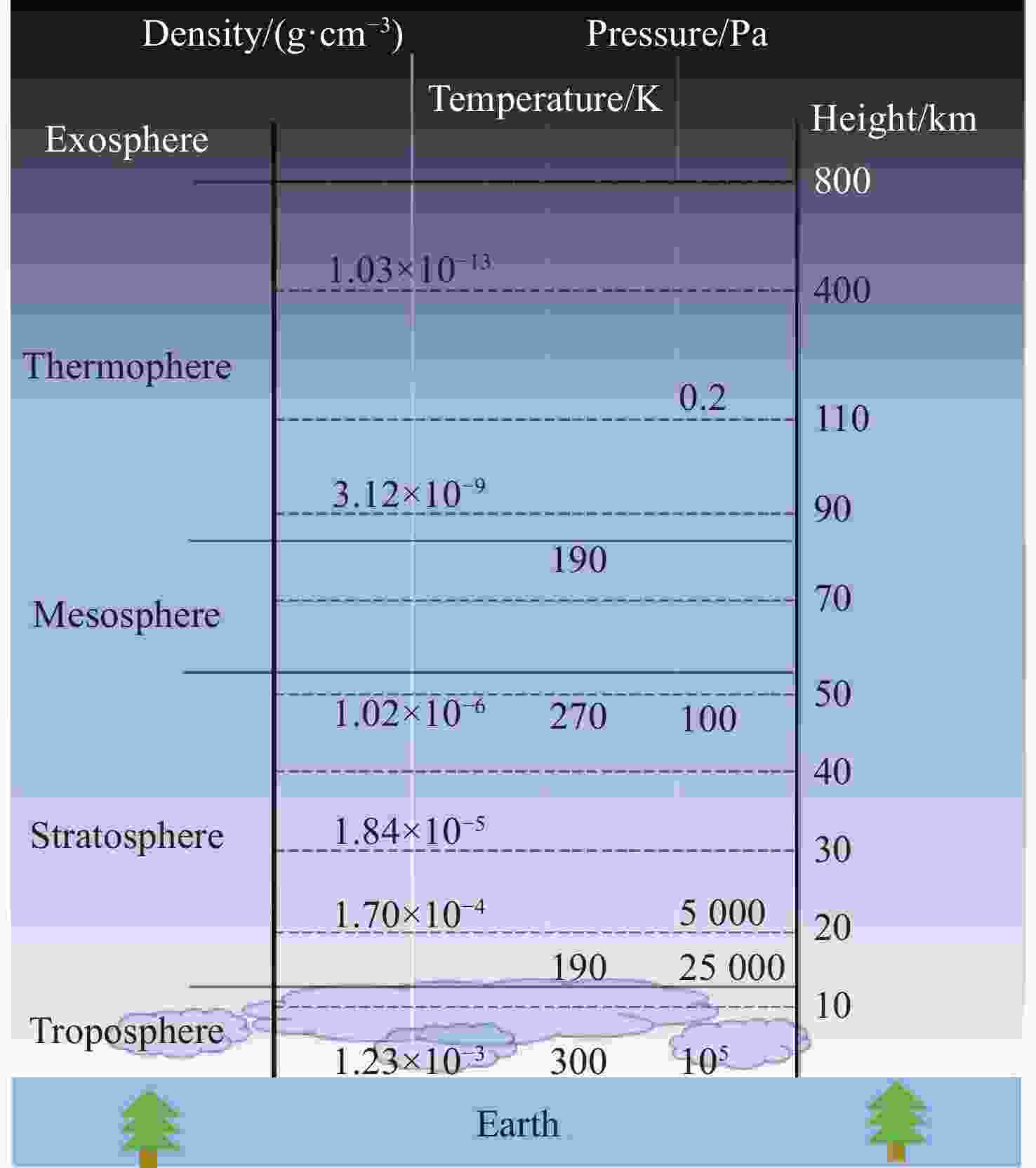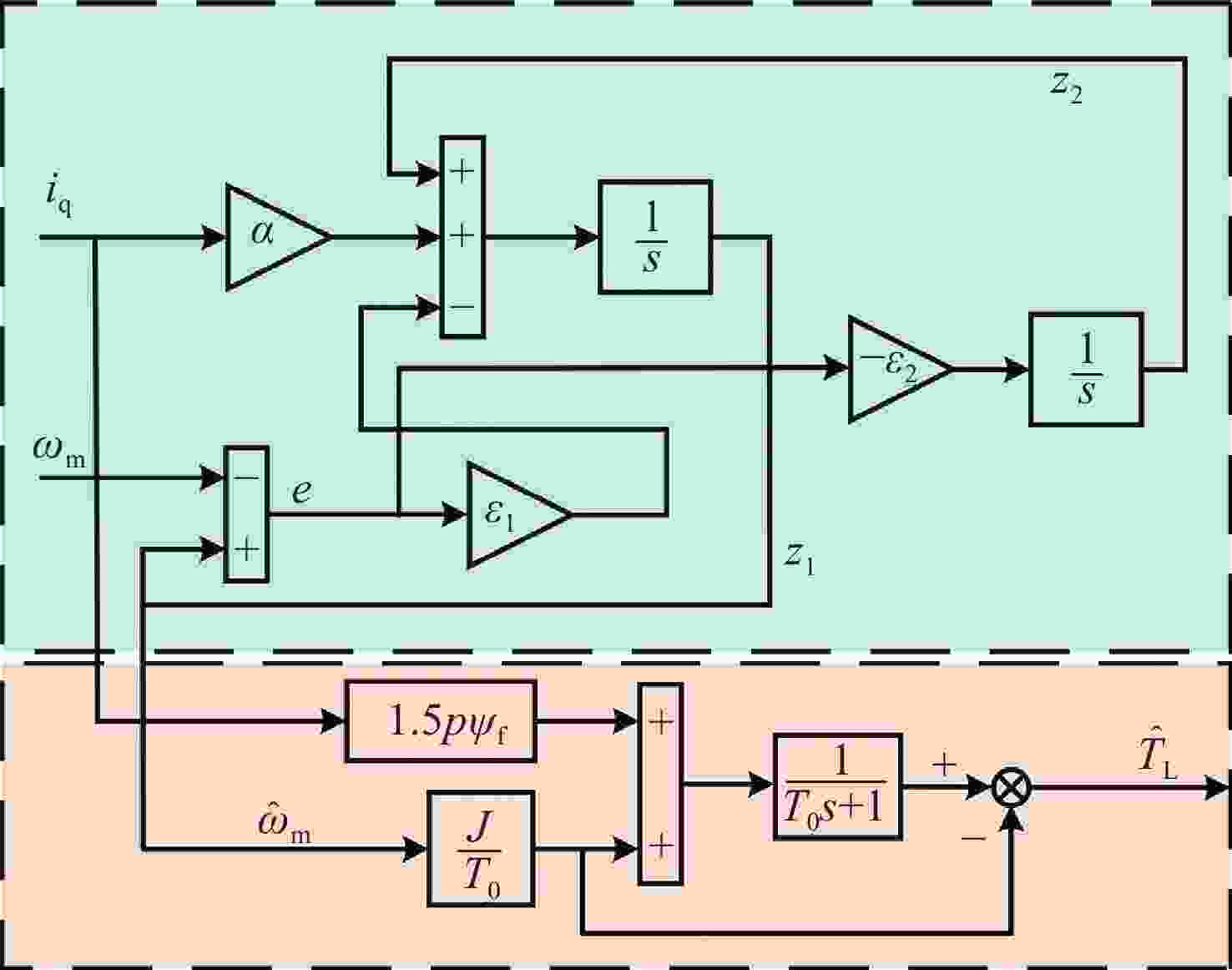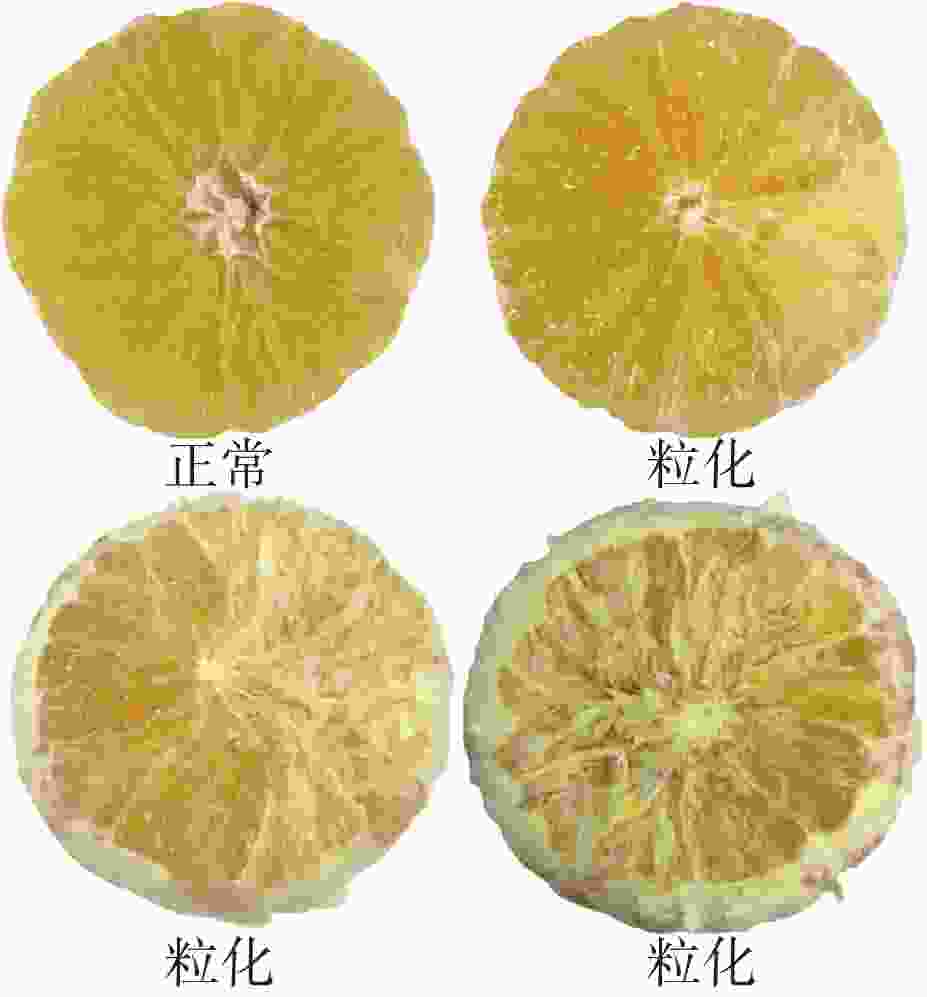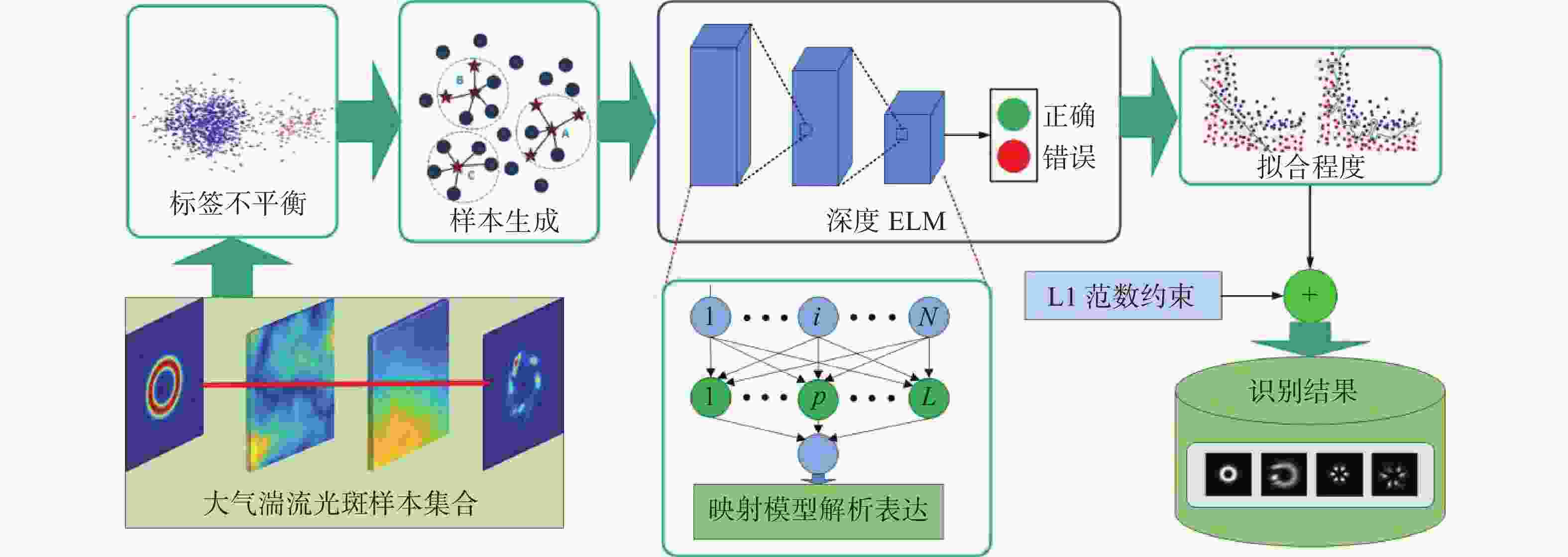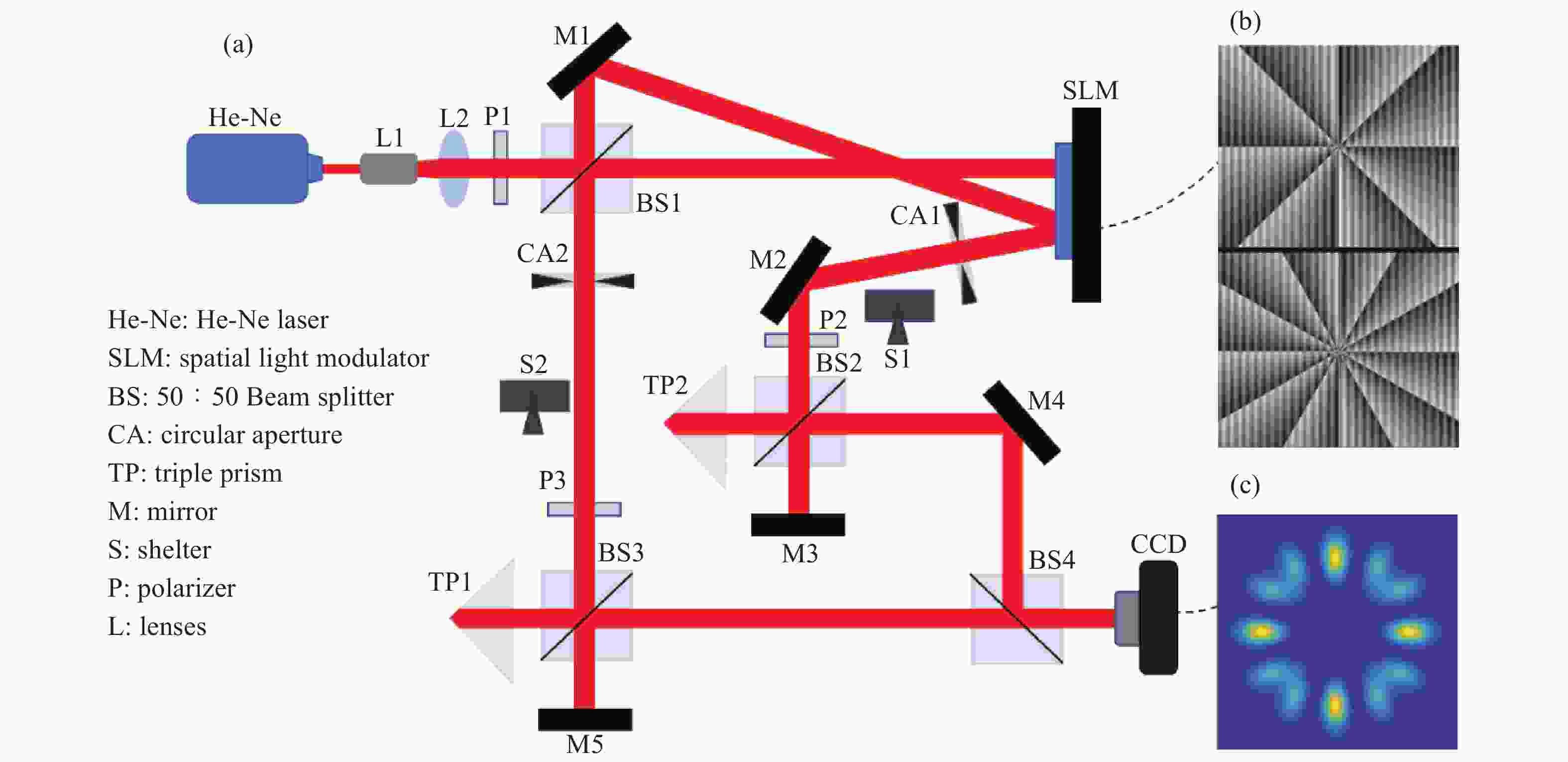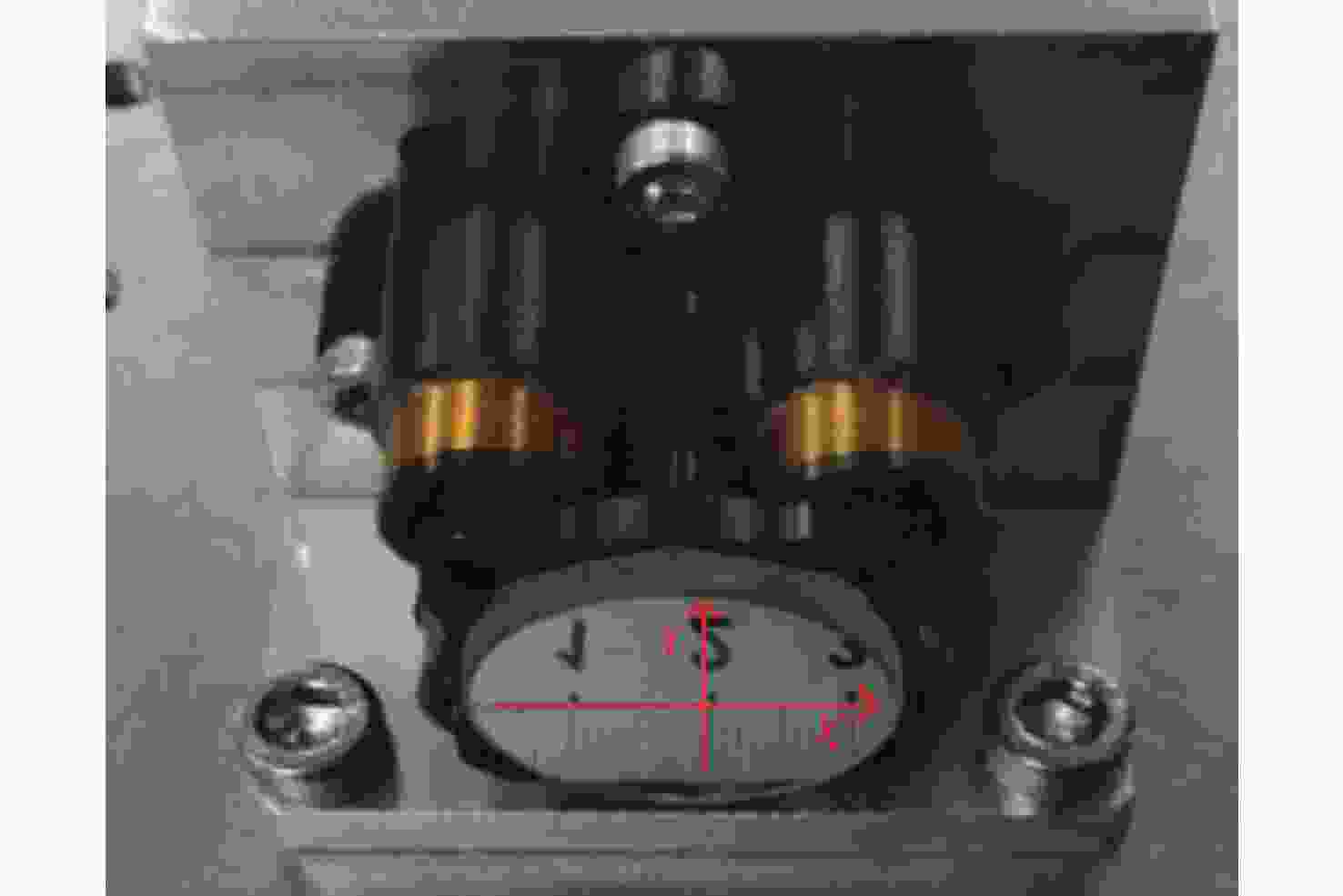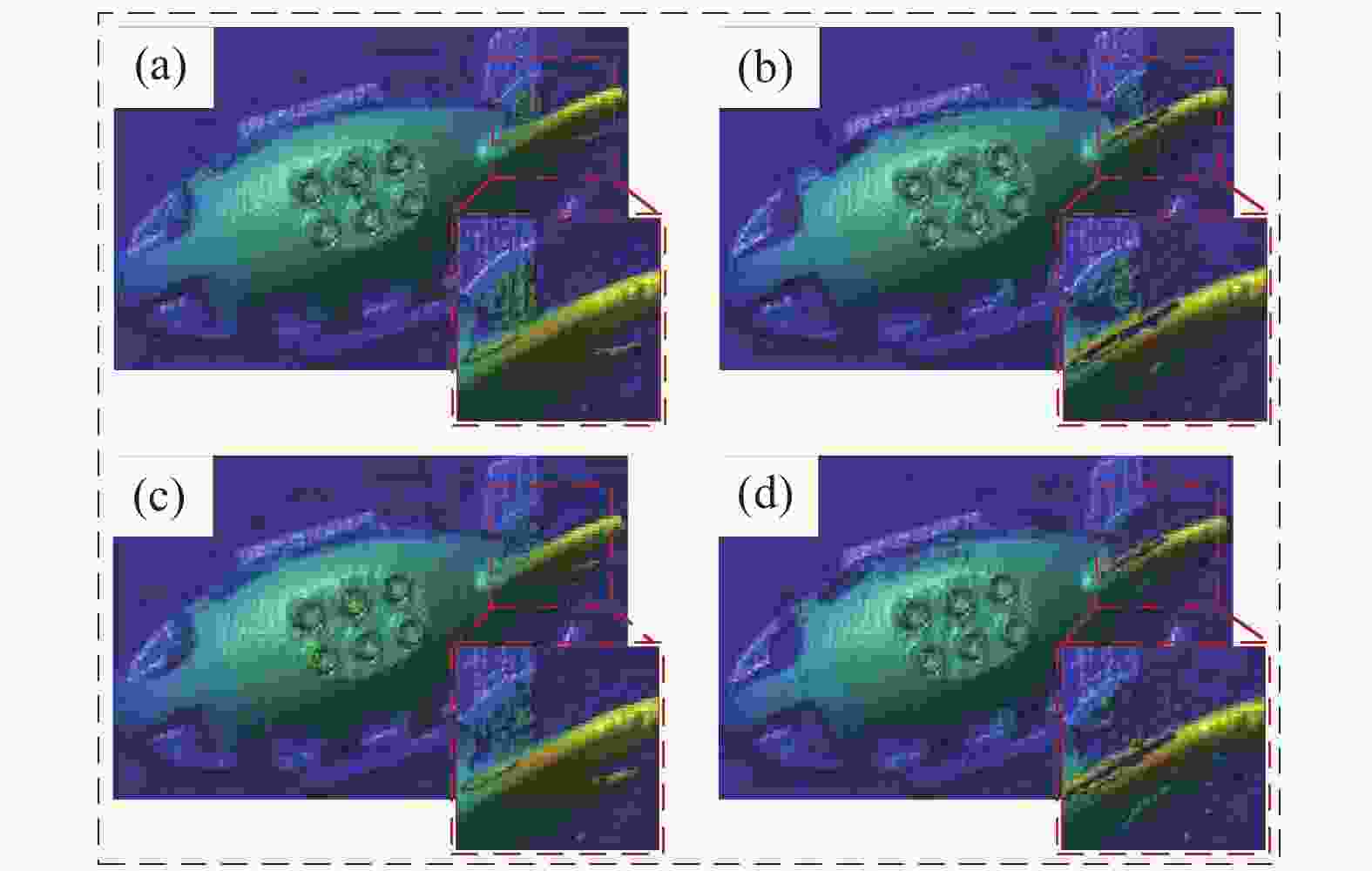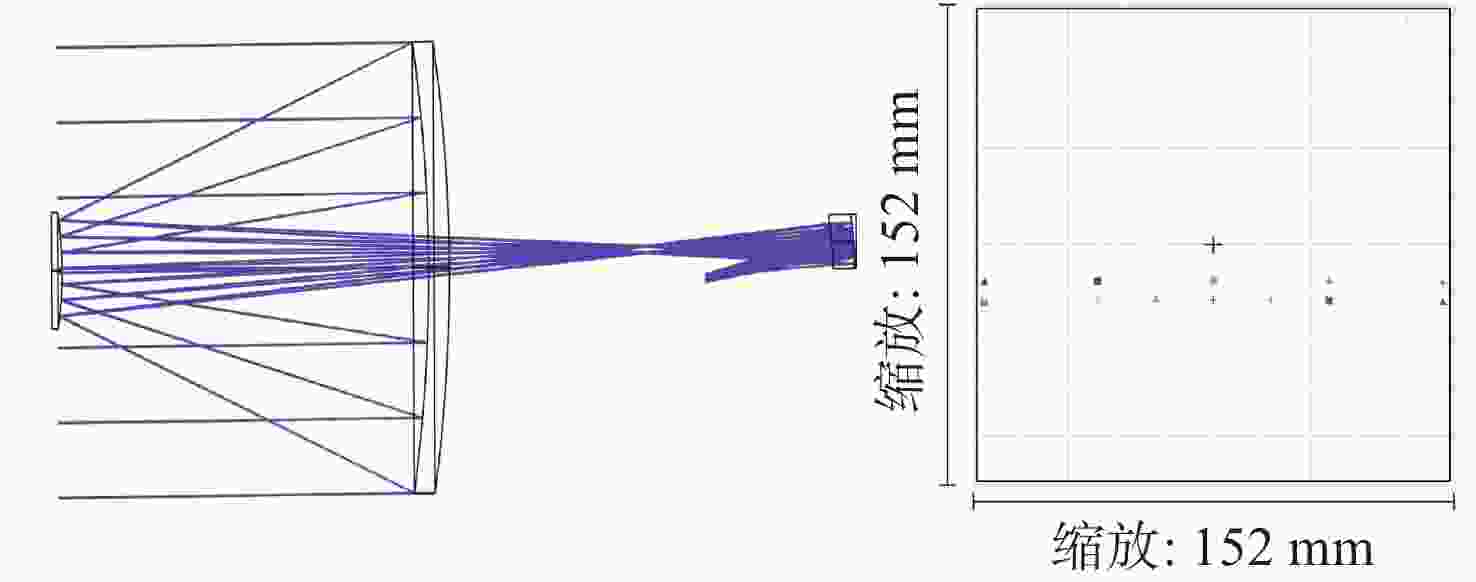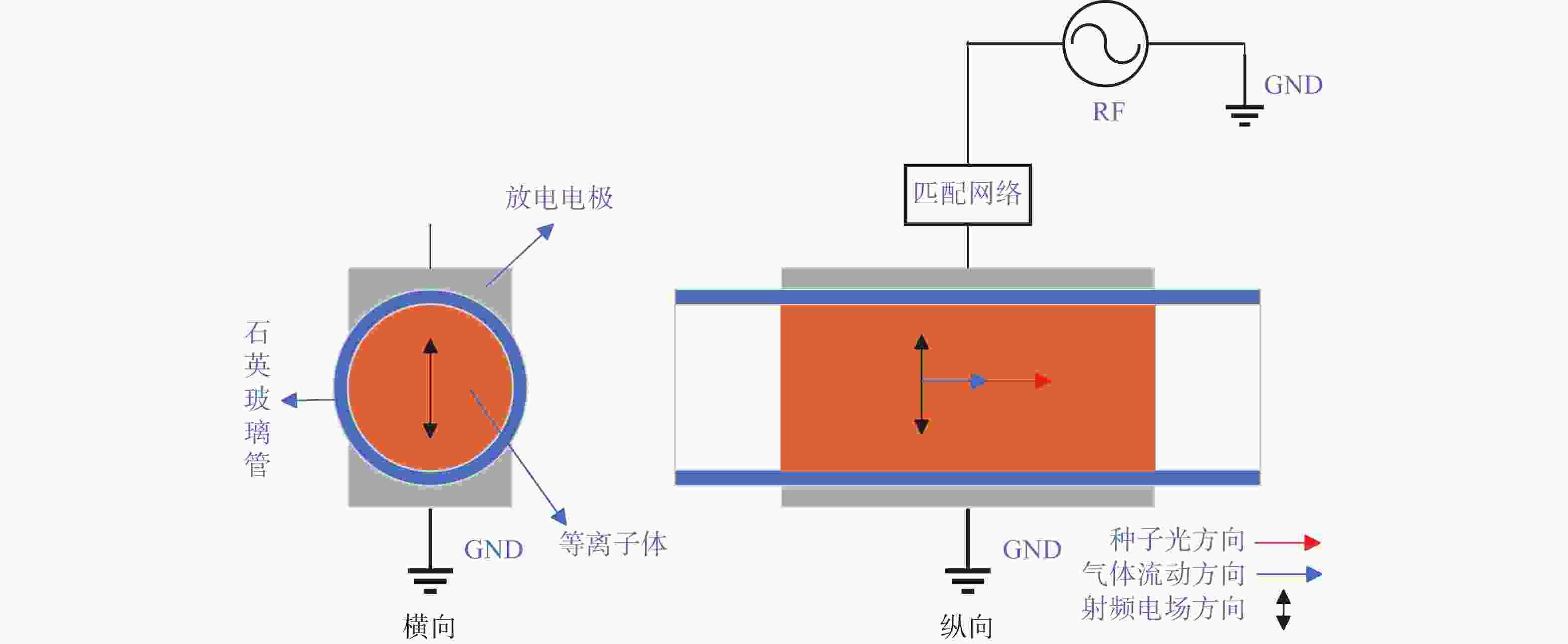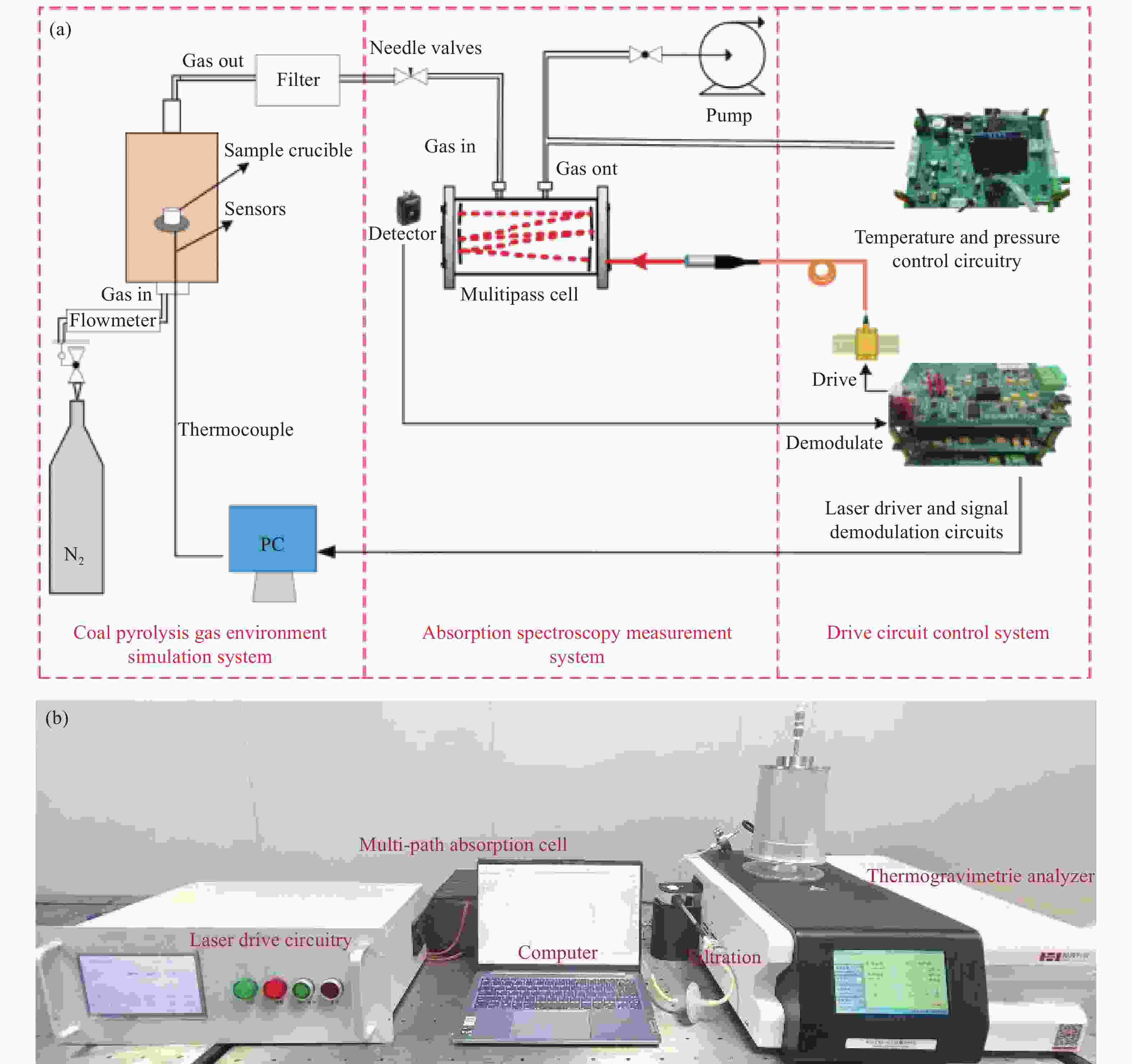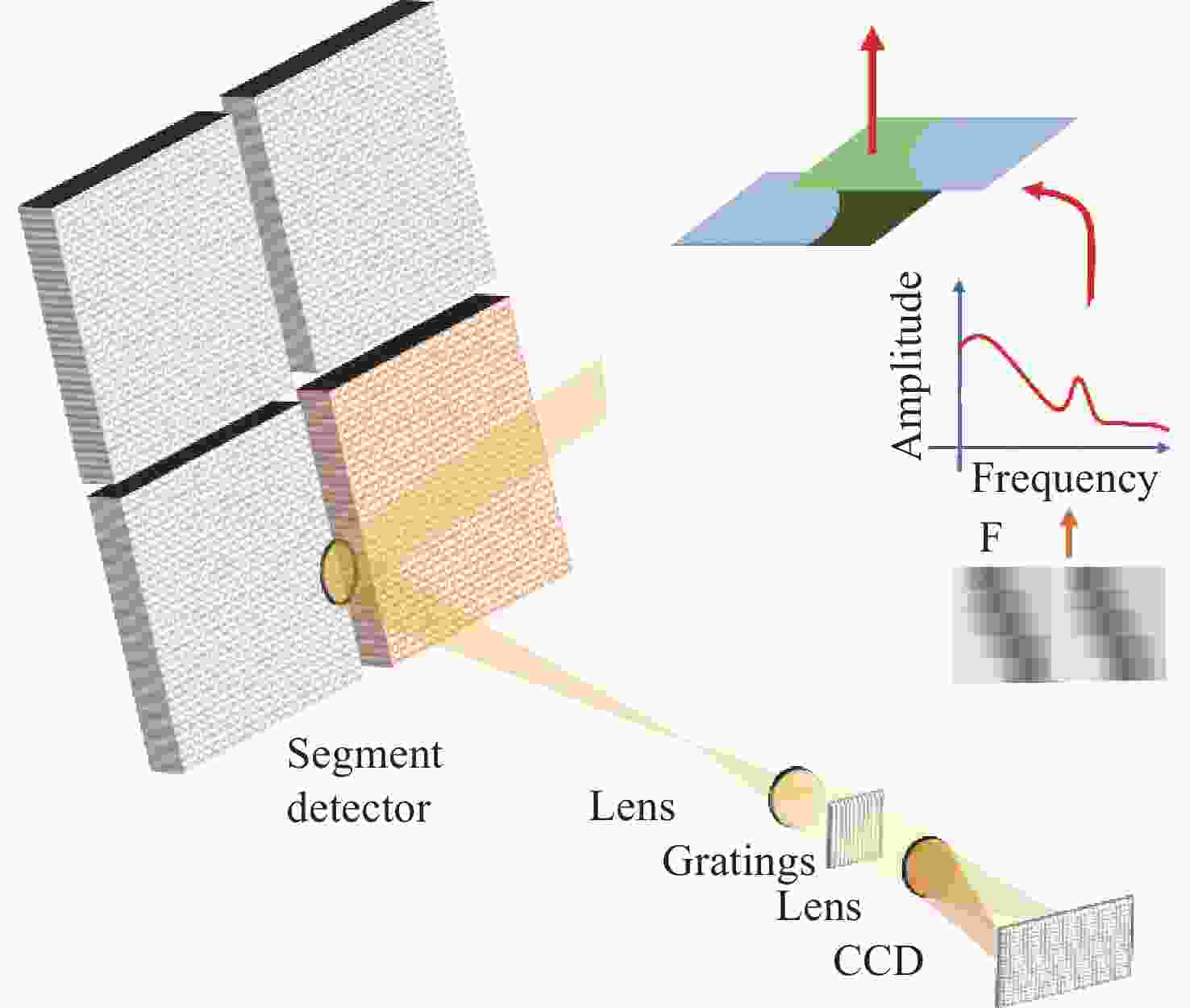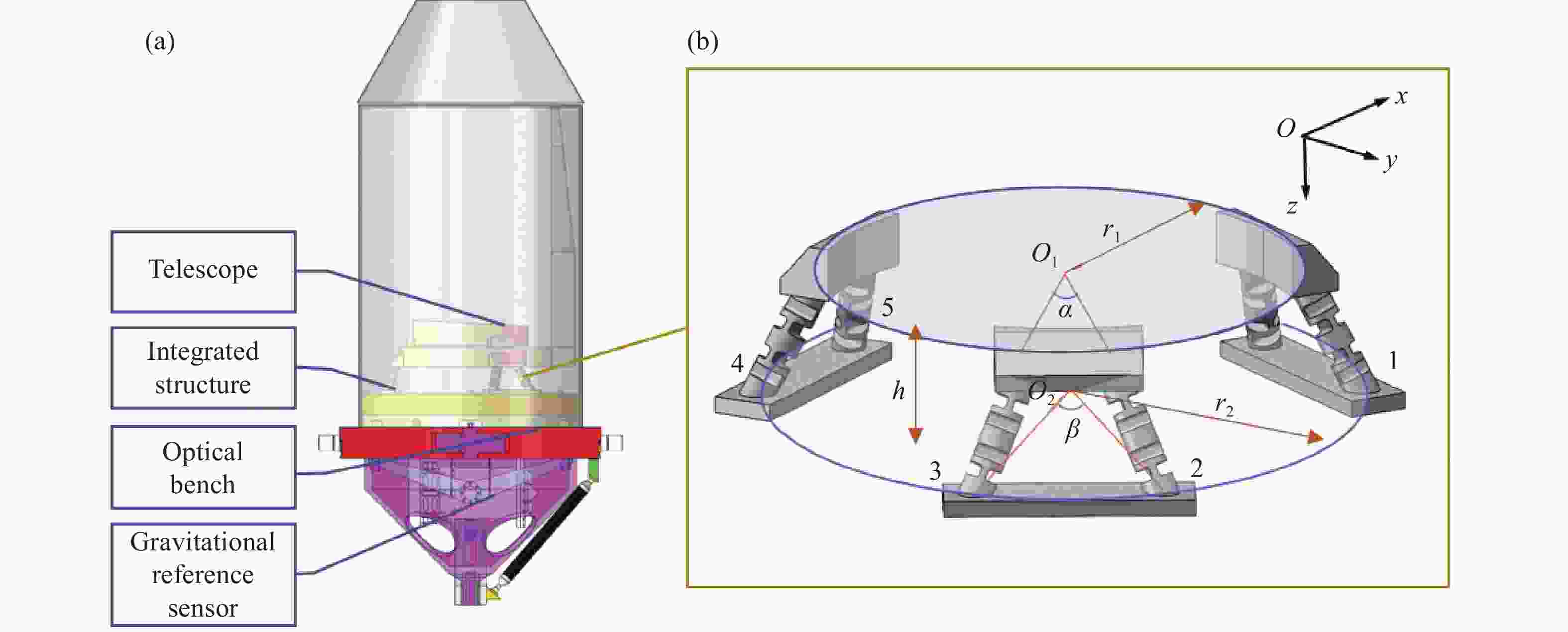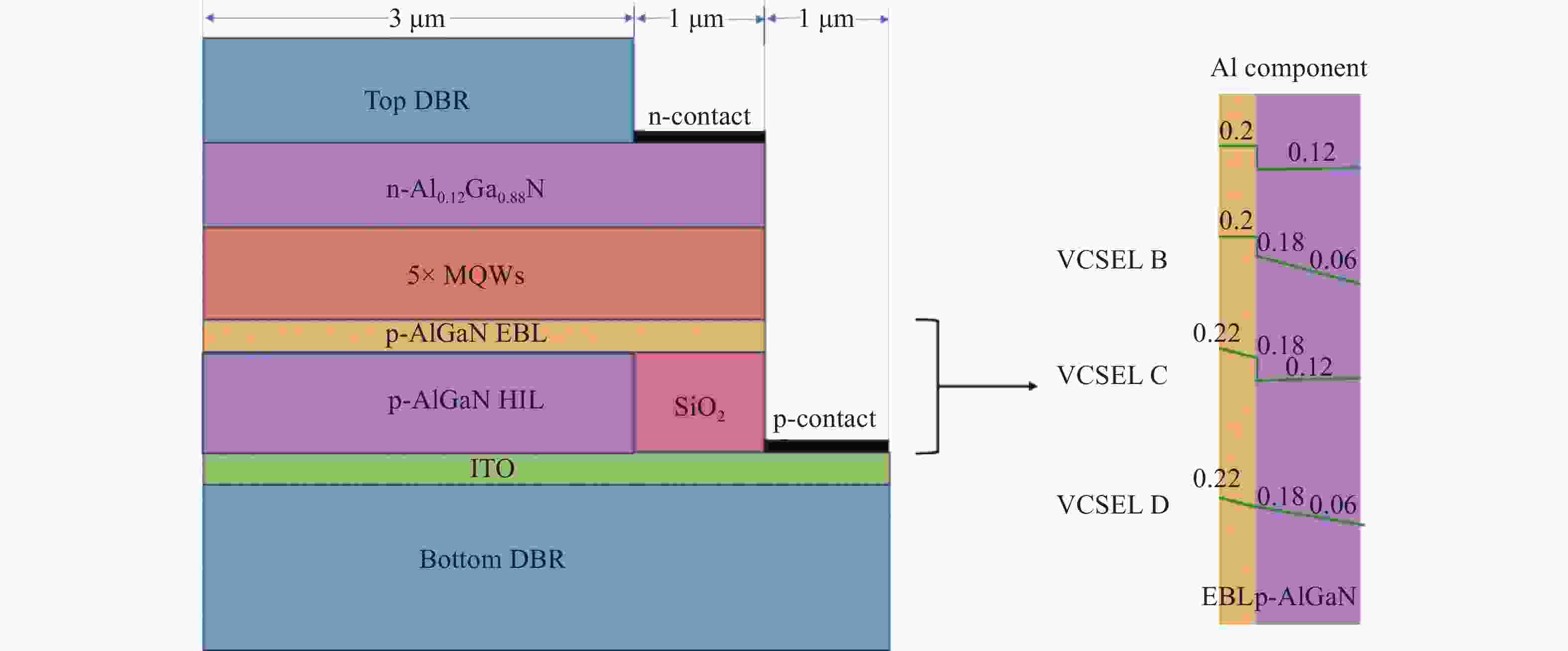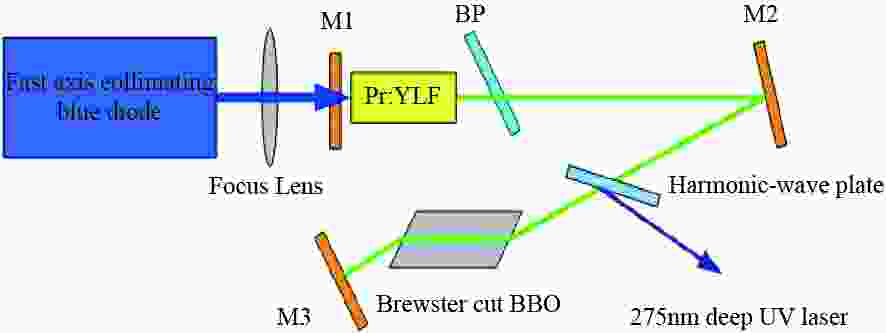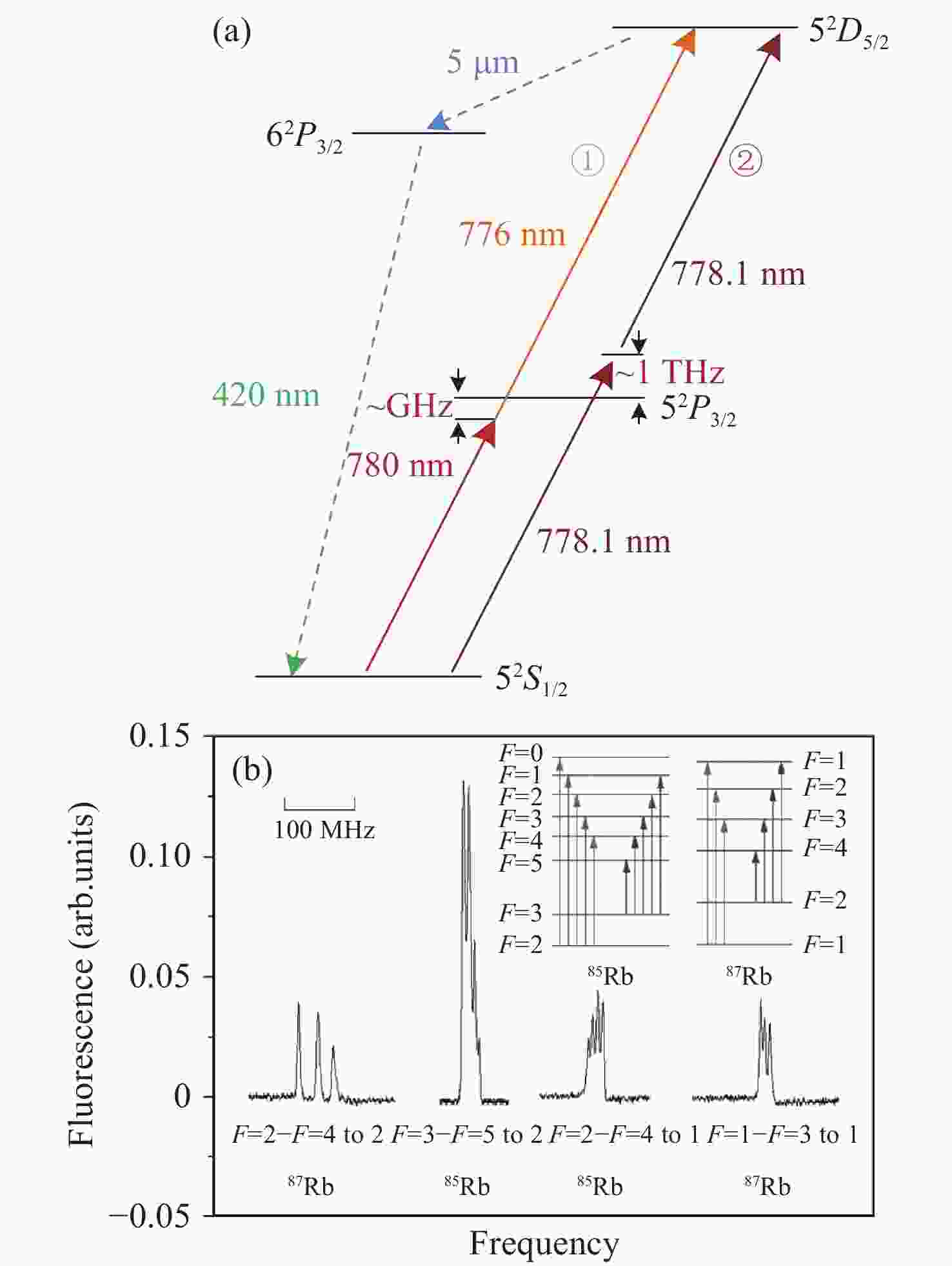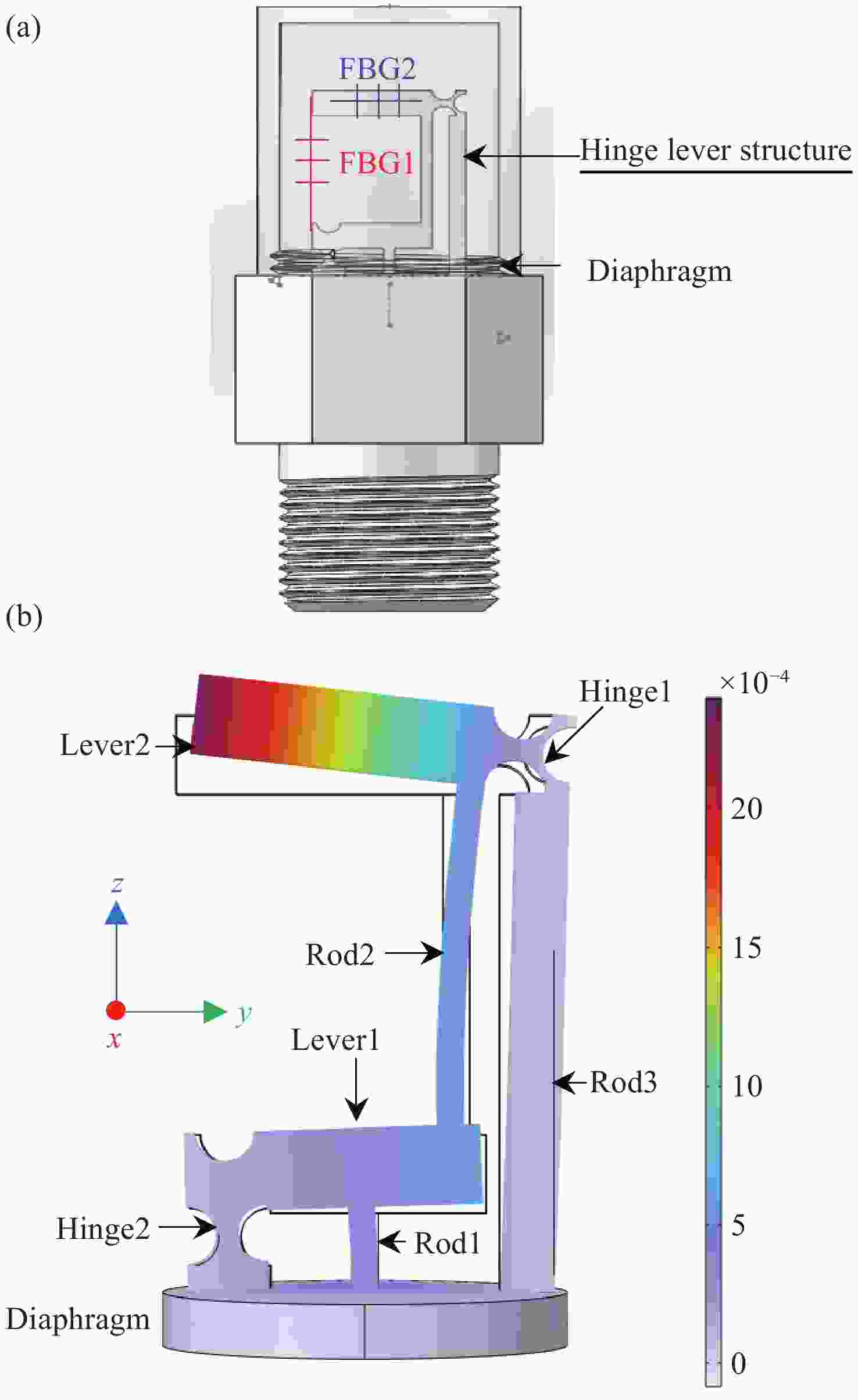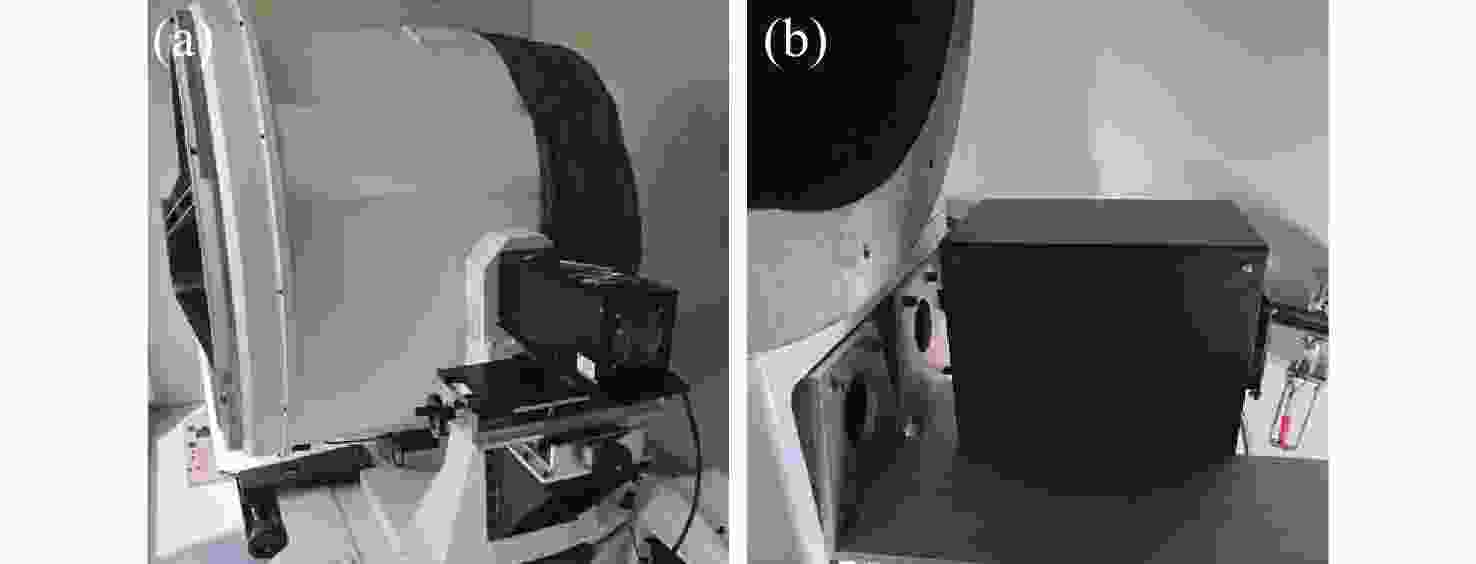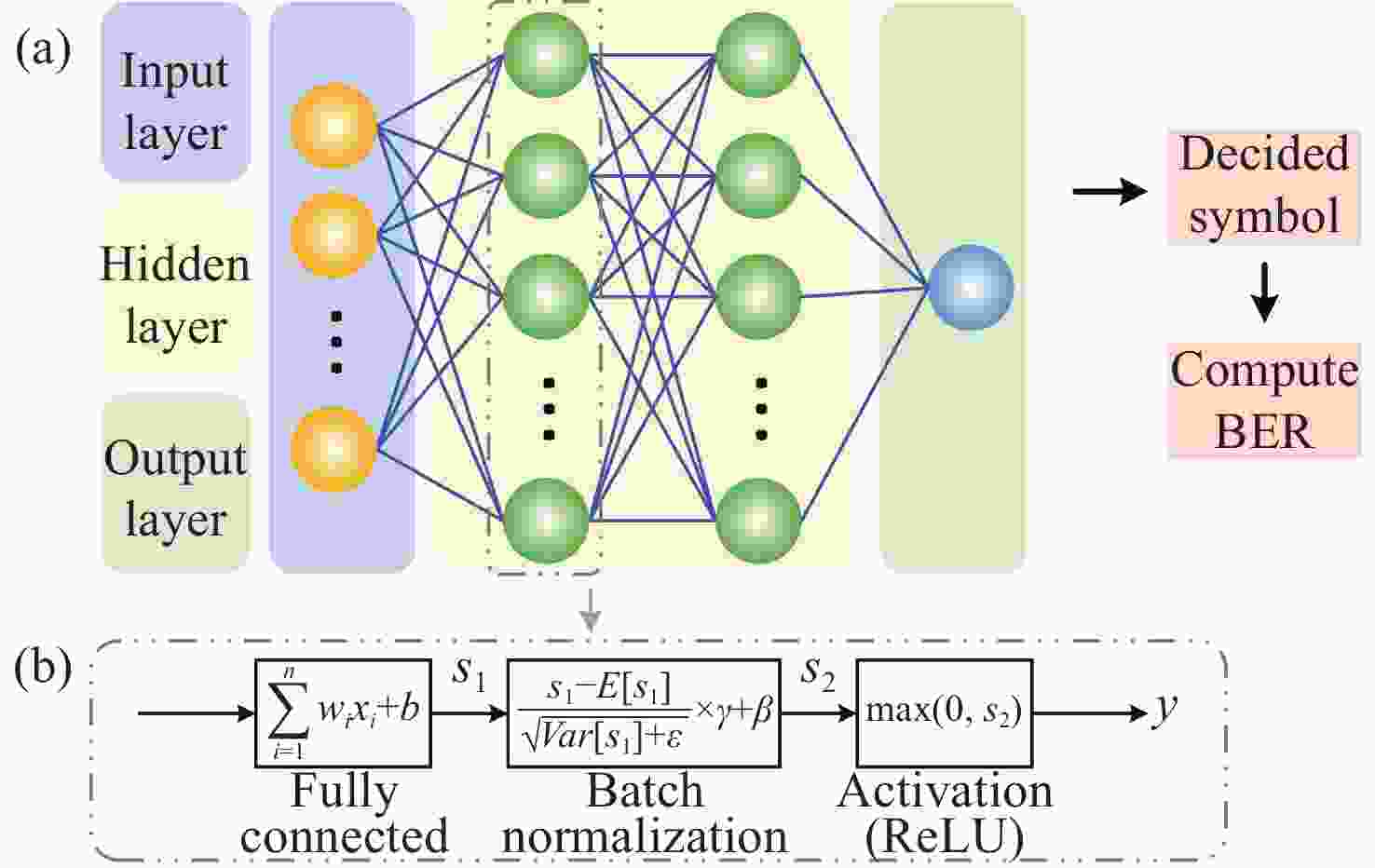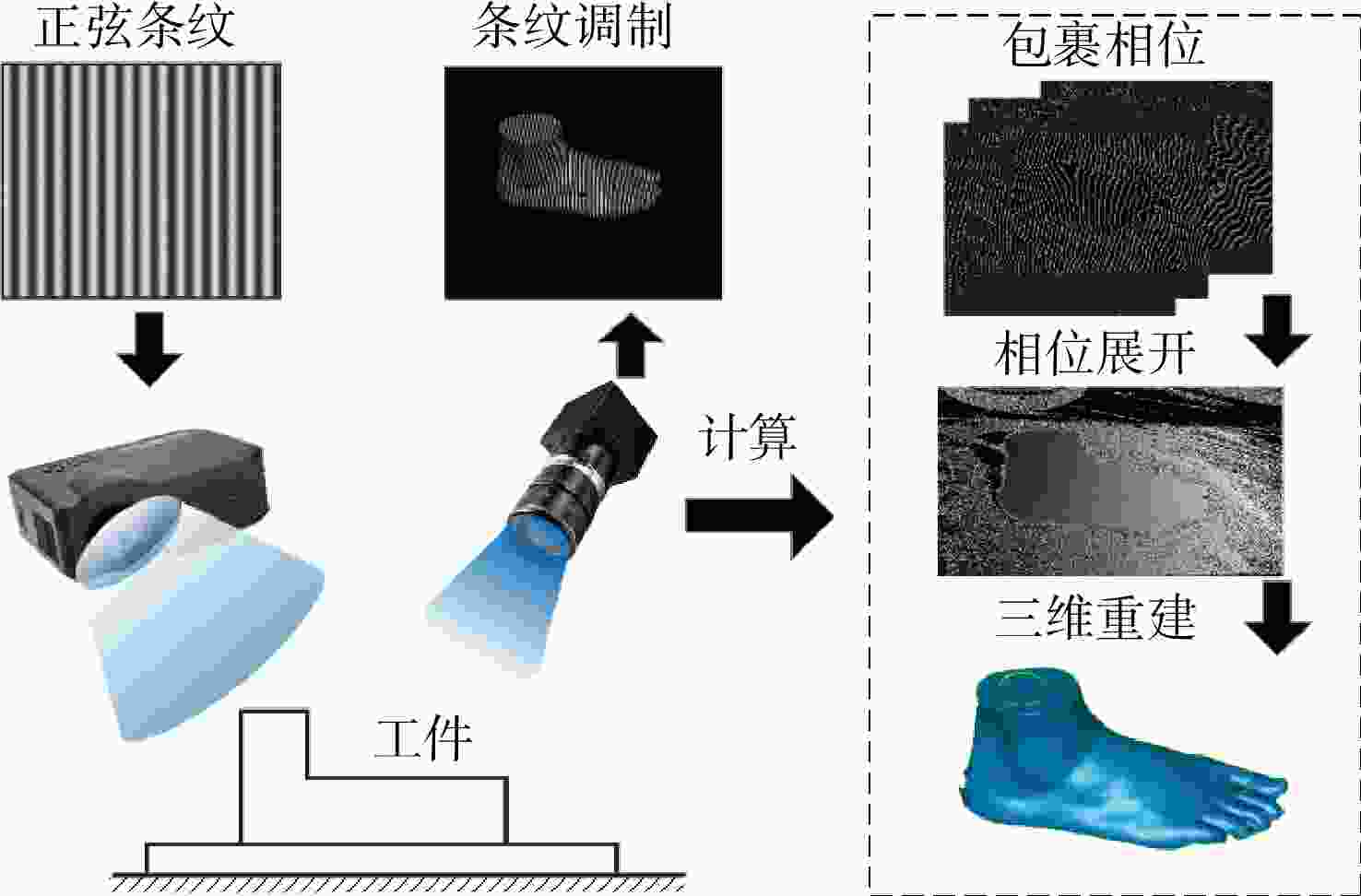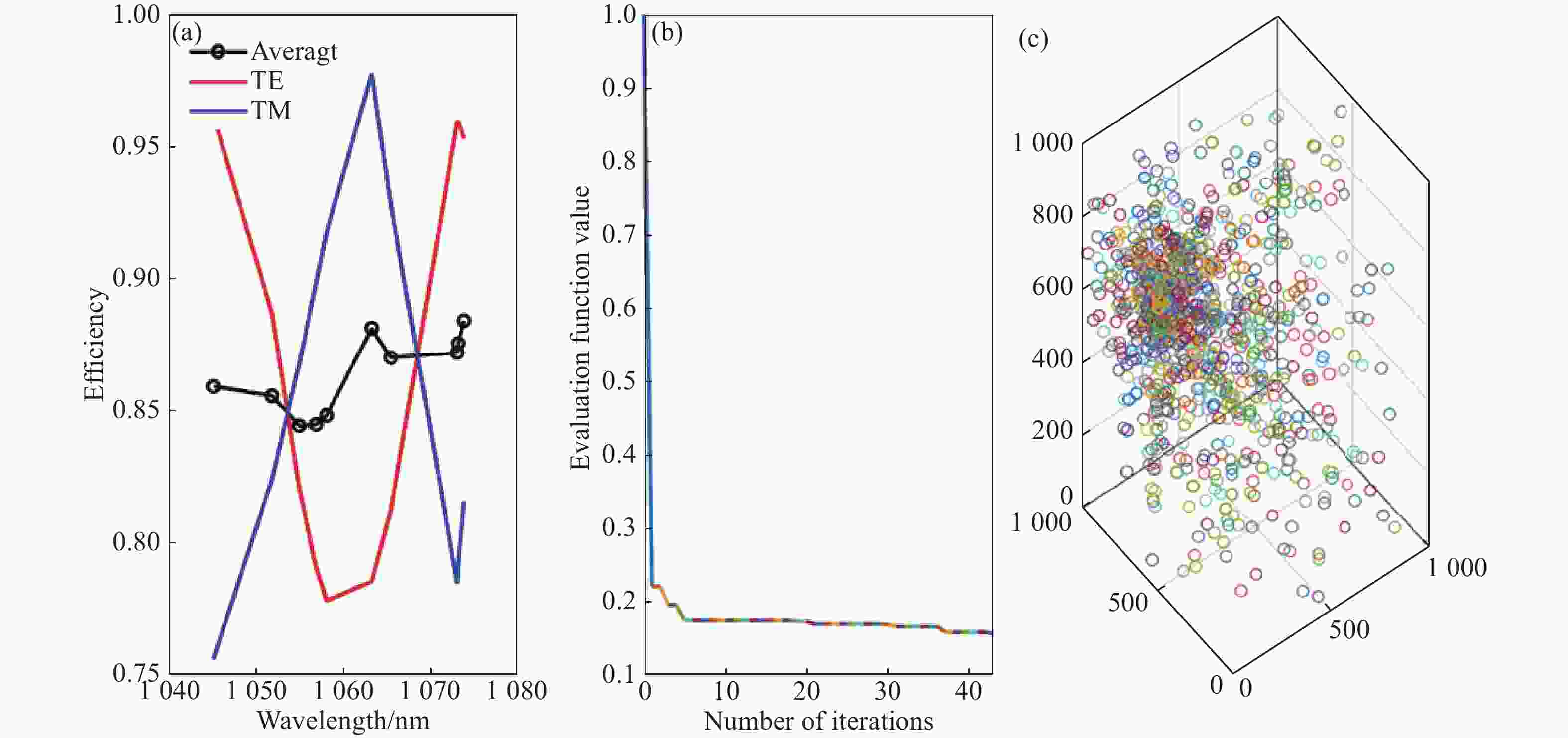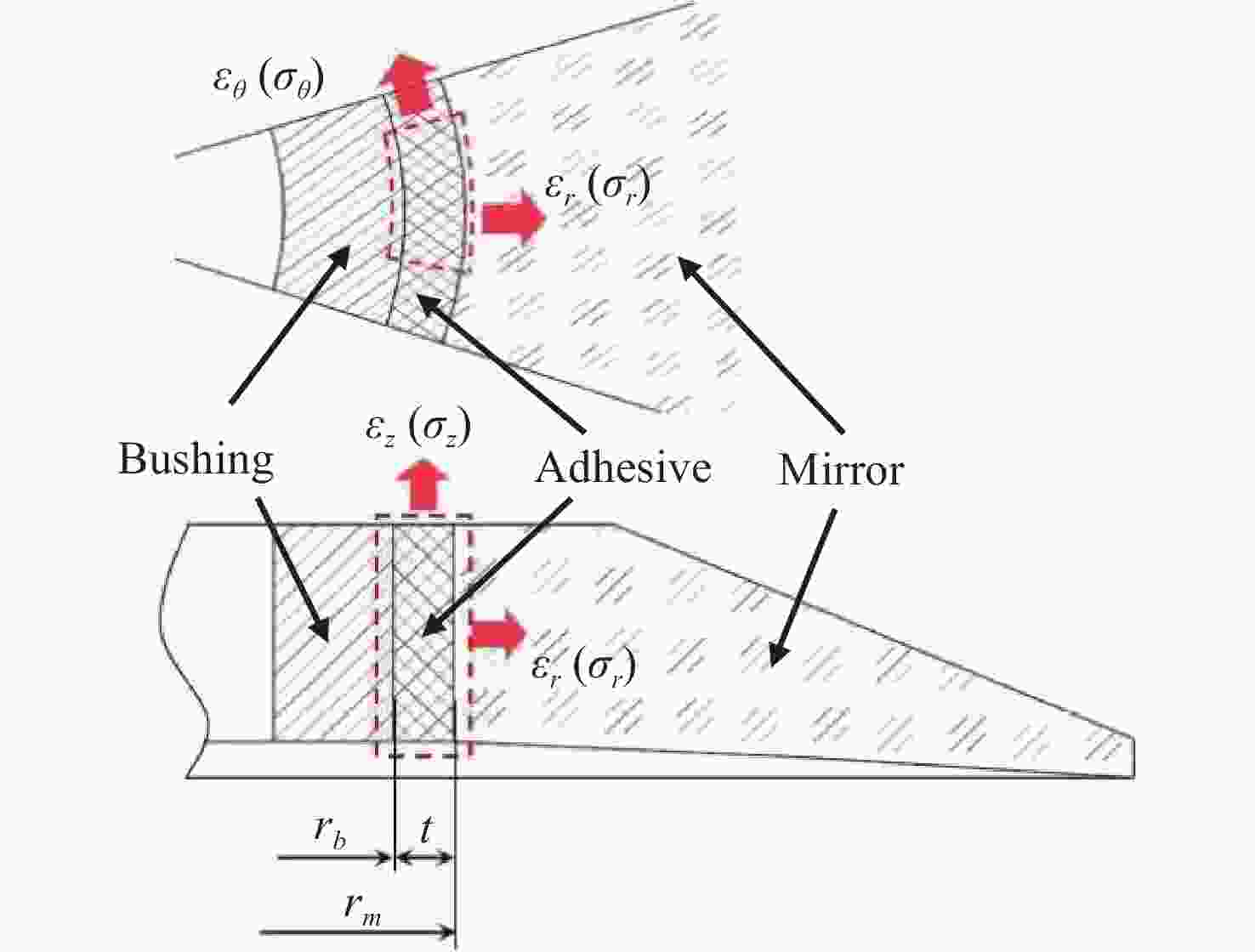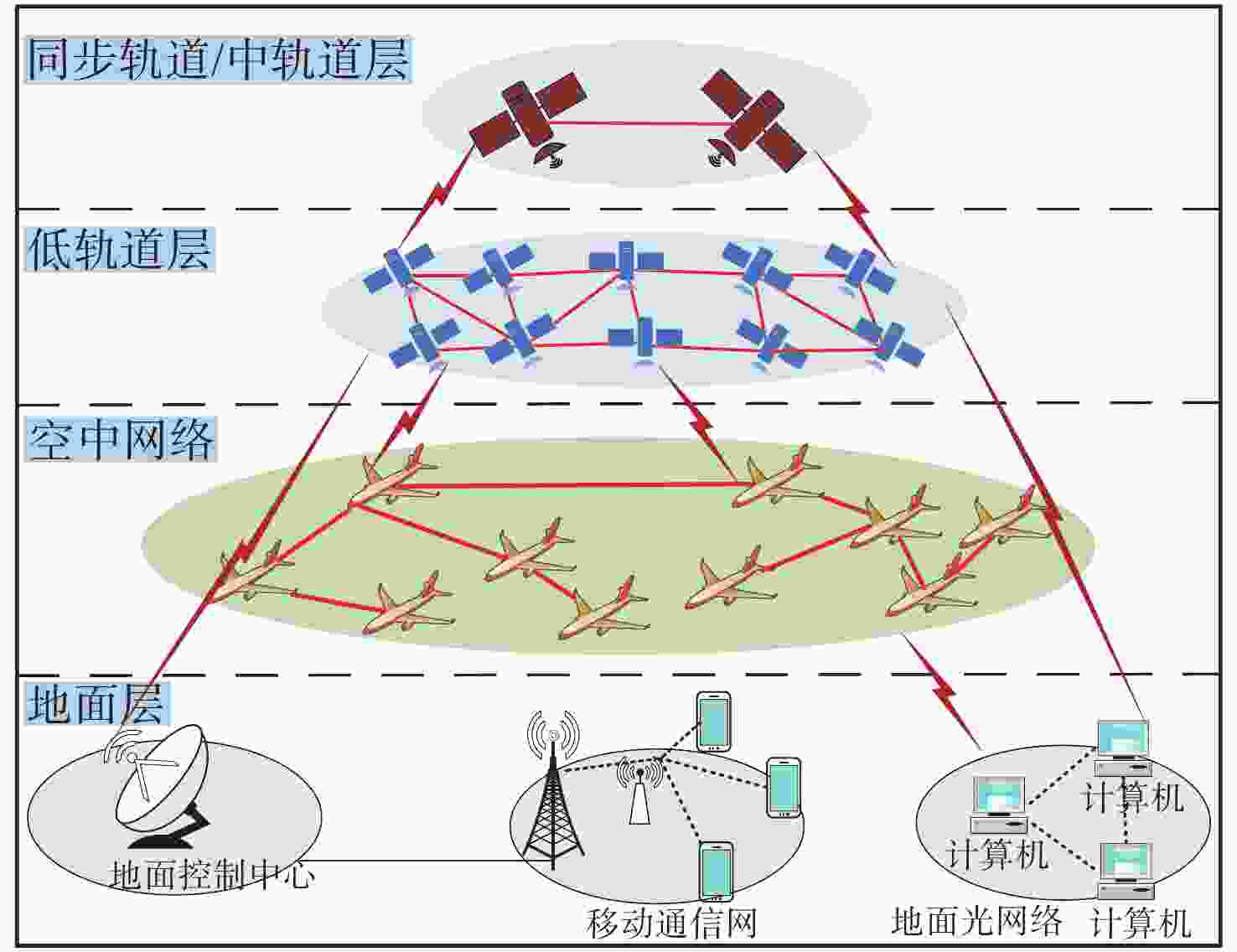Long-period fiber gratings have the advantages of small size, corrosion resistance, anti-electromagnetic interference, and high sensitivity, making them widely used in biomedicine, the power industry, and aerospace. This paper develops a long-period fiber grating sensor based on periodic microchannels. First, a series of linear structures were etched in the cladding of a single-mode fiber by femtosecond laser micromachining. Then, the laser-modified region was selectively eroded by selective chemical etching to obtain the periodic microchannel structure. Finally, the channels were filled with polydimethylsiloxane (PDMS) to improve the spectral quality. The experimental results show that the sensor has good sensitivity in the measurement of various parameters such as temperature, stress, refractive index (RI), and bending. It has a temperature sensitivity of −55.19 pm/°C, a strain sensitivity of −3.19 pm/με, a maximum refractive index sensitivity of 540.28 nm/RIU, and a bending sensitivity of 2.65 dB/m−1. All of the measurement parameters show good linear responses. The sensor has strong application prospects in the field of precision measurement and sensing.
The sensitivity of phase-sensitive optical time-domain reflecting (Φ-OTDR) system is limited by the intrinsic system noise such as the phase noise of the laser, the spontaneous emission noise of the erbium-doped fiber amplifier, and the shot noise and thermal noise of the photodetector, as well as the random noise in the environment. Therefore, the noise reduction algorithms based on the optical time-domain reflecting data is investigated to improve the signal-to-noise ratio (SNR) of the system without degrading the frequency response range. And the Savitzky-Golay smoothing algorithm is proposed by selecting a slidable window with fixed-length to process OTDR data for the SNR improvement, while maintaining the system sampling frequency, and then, the experimental system is built to demonstrate the results. The experimental results show that by using the Savitzky-Golay smoothing algorithm, the SNR of the system is improved by 5.41dB relative to that by difference method with the original data, and the SNR is improved by 3.39dB and 5.05dB respectively, compared to the commonly used cumulative averaging method and sliding averaging method. It is demonstrated that the Savitzky-Golay smoothing algorithm can improve the sensitivity and accuracy of the Φ-OTDR system, which helps to accurately sense weak vibration events and reduce false alarm rate.
There is nonradiative recombination in waveguide region owing to severe carrier leakage, which in turn reduces output power and wall-plug efficiency. In this paper, we designed a novel epitaxial structure, which suppresses carrier leakage by inserting n-Ga0.55In0.45P and p-GaAs0.6P0.4 between barriers and waveguide layers, respectively, to modulate the energy band structure and to increase the height of barriers. The results show that the leakage current density reduces by 87.71%, compared to traditional structure. The nonradiative recombination current density of novel structure reduces to 37.411 A/cm2, and the output power reaches 12.80 W with wall-plug efficiency of 78.24% at an injection current density 5 A/cm2 at room temperature. In addition, the temperature drift coefficient of center wavelength is 0.206 nm/°C at the temperature range from 5 °C to 65 °C, and the slope of fitted straight line of threshold current with temperature variation is 0.00113. The novel epitaxial structure provides a theoretical basis for achieving high-power laser diode.
Aiming at the problems of low accuracy and easy to fall into local optimal solutions of the existing lens distortion parameter estimation methods, a catadioptric omnidirectional camera lens distortion parameter method based on the improved Aquila optimization (AO) algorithm is proposed. Firstly, the optimization ability of the Aquila optimization algorithm is enhanced by integrating chaotic mapping, adaptive adjustment strategy, and population optimization strategy, which solves the problems of slow convergence speed and proneness to falling into local optimal solutions. Secondly, the distribution range of distortion parameters is derived and determined by the corresponding distortion edges of straight lines in the space and the single parameter division model. Then, the optimization objective function containing the distortion parameters is constructed. Finally, the improved Aquila optimization algorithm is used to find the best distortion parameters for the optimization objective function. After analyzing the correction results of standard gallery images and omnidirectional images, the method proposed in this paper estimates the main point error within 0.5 pixels and the radial aberration coefficient error within 2.5%. It can effectively estimate the lens aberration parameters and realize the omnidirectional image aberration correction. It improves the visual navigation system's image quality under the task of environment perception and is valuable in engineering applications.
In response to the current problem of difficulty in achieving extremely short total length and low sensitivity in medium wave infrared zoom systems under conditions of large zoom ratio and long focal length, we design a low-sensitivity medium wave infrared zoom optical system with a total length of only 337 mm and no need for folding optical paths, through the rational allocation of aspherical and diffractive surfaces, as well as adopting a low sensitivity design method for independent components. By reducing the aberration of each component, the system tolerance sensitivity is achieved. The system achieves a 30x zoom ratio and continuous zoom with a long focal length of 30-900 mm. The system has advantages such as a large zoom ratio, long focal length zoom, extremely short total length, low sensitivity, and good image quality within the entire focal length range. It has significant application advantages for military applications such as target recognition, tracking, and detection in narrow spaces.
In order to enhance the control performance of piezo-positioning system, the influence of hysteresis characteristics and its compensation method are studied. Hammerstein model is used to represented the dynamic hysteresis nonlinear characteristics of piezo-positioning actuator. The static nonlinear part and dynamic linear part of the Hammerstein model are represented by models obtained through the Prandtl-Ishlinskii (P-I) model and Hankel matrix system identification method, respectively. This model demonstrates good generalization capability for typical input frequencies below 200 Hz. A sliding mode inverse compensation tracking control strategy based on P-I inverse model and integral augmentation is proposed. Experimental results show that compared with PID inverse compensation control and sliding mode control without inverse compensation, the sliding mode inverse compensation control has a more ideal step response and no overshoot, moreover the settling time is only 6.2 ms. In the frequency domain, the system closed-loop tracking bandwidth reaches 119.9 Hz, and the disturbance rejection bandwidth reaches 86.2 Hz. The proposed control strategy can effectively compensate the hysteresis nonlinearity, and improve the tracking accuracy and anti-disturbance capability of piezo-positioning system.
This paper presents various aspects of atmospheric refraction to gain insight into the advances in this field. It divides the effects of atmospheric refraction into two categories: the visible-to-infrared bands used in research fields such as optical imaging, laser transmission, and optoelectronic tracking and the radio band used in radar measurements and satellite detection. The calculation formulas for these two bands are different in their practical treatment. This paper introduces the refractive index formulas according to the refractive index formula's development history and points out the limitations of each formula. The current best choice for the former formula is the one summarized by Rüeger scholars; for the latter, it is recommended to choose the radio refractive index formula in the Rec. ITU-R P.453-14. In addition, the relationship between the refractive index of the Earth's surface and altitude, reference data for the refractive index on a global scale, and statistical distributions for the calculation of the refractive index gradient are given in the recommendation. Finally, traditional calculation methods for obtaining atmospheric refraction and optical observation methods are presented. The former study is based on the modeling of atmospheric patterns or meteorological data, formulae for refractive indices in specific regions, or model fitting to satisfy accuracy in a single environment or on an average scale. The optical measurement method does not need an atmospheric model as a basis, not does it rely on meteorological parameters. The measurement results of the data are real-time and more representative of the path. It can make up for some of shortcomings of the traditional methods, and is more in line with future development trend of the future.
With its high torque ratio and stable low-speed operation, the Segmented Arc Permanent Magnet Synchronous Motor provides high-performance drive technology support for large-aperture astronomical telescope observations. Improving the motor’s performance is challenging due to various internal and external interferences during its operation, such as parameter distortion, harmonics, etc. To this end, this paper proposes an integral sliding mode controller based on a new reaching law and a hybrid control strategy that combines an expanded state observer and a load observer, aiming to optimize the traditional sliding mode control and enhance the system’s anti-interference ability. The traditional reaching law has complicated parameters and cannot suppress chattering well. The new reaching law simplifies the parameters and effectively overcomes the system chattering. Second, an expanded state observer is used to estimate the feedback speed. Then, the q-axis current information and the estimated precise speed data are combined as the input of the load torque observer. This further improves the load observation performance and converts the load observation value into current for pre-processing. Feedback compensation is used to improve the moter’s anti-interference performance. Simulation and experimental results show that the proposed dual observer method can accurately observe the motor's speed and load, significantly enhancing the motor’s ability to resist load disturbances. At the same time, the new sliding mode speed controller reduces the motor speed overshoot and suppresses the buffeting of the sliding mode to a certain extent, providing theoretical and experimental support for arc motors in high-precision observation applications of large-aperture astronomical telescopes.
In non-Hermitian systems, controlling the gain or loss of the system can enable the system state to transition from PT-symmetry to broken PT-symmetry. This transition leads to a special point known as the exceptional point, where the system eigenvalues and eigenstates become simultaneously degenerate. When combined with metasurfaces, the exceptional point leads to various intriguing optical phenomena, such as asymmetric transmission, exceptional topological phase, and the non-Hermitian skinning effect. However, active metasurfaces introducing gains are difficult to realize experimentally. Therefore, designing passive metasurfaces using equivalent gains through loss becomes a powerful tool in non-Hermitian research. In this paper, we review the theoretical models, research progress, specific applications, and experimental design in the study of the exceptional point on passive non-Hermitian metasurfaces and look forward to the future direction of this field.
In traditional multi-line laser 3D reconstruction technology, researchers typically use a method that combines binocular epipolar constraints with laser spatial equations. This method first utilizes epipolar constraints to identify multiple potential matching points, and then filters out the correct matching points through the spatial equations of the multi-line laser. The process of 3D reconstruction is then achieved using these matching points. However, due to the inevitable noise affecting the multi-line laser lines, the extracted laser center coordinates often contain certain errors. These errors can lead to the inability to obtain high-precision 3D data when using matching points found based on epipolar constraints for 3D reconstruction directly. To address this issue, this paper proposes a method based on geometric estimation to achieve 3D reconstruction of multi-line lasers. First, by calibrating the quadratic surface equations of the multi-line laser, combined with the binocular epipolar constraint method, the initial matching points of the multi-line laser can be calculated. After finding the correct initial matching points, a geometric distance minimization estimation model is established using the distance constraint from points to epipolar lines. This geometric distance refers to the distance from the laser center points in the left and right images to their corresponding epipolar lines. Through this geometric distance minimization optimization estimation, new matching points that better conform to the epipolar constraints can be recalculated. Finally, these new matching points are used to complete the 3D reconstruction of the multi-line laser. Compared to the traditional method based on epipolar constraints, the algorithm proposed in this paper performs better in terms of matching and accuracy.The accuracy of the final 3D reconstruction can reach about 0.02mm. With this method, the overall accuracy of binocular multi-line laser reconstruction can be significantly improved, thereby obtaining more accurate and reliable 3D data.
Third-order Raman fiber amplifier is used in long-haul unrepeatered optical transmission due to its higher gain and lower noise figure. Third-order Raman fiber amplifier is an advanced technology in Raman amplification, and currently there is very limited research on it in China. The relationship between the pump configuration and performance of the amplifier is not clear yet. Therefore, this paper analyzes the influence of second-order pump seed light on third-order Raman fiber amplifiers through experiments. Firstly, the feasibility of not using second-order pump seed light is qualitatively analyzed. Then it is experimentally verified that in the absence of second-order pump seed light, the third-order Raman fiber amplifier can still achieve signal light gain, but its efficiency will decrease. A 47-channel 200 km wavelength division multiplexing transmission system is constructed, the experimental results show that the third-order Raman fiber amplifier can amplify the signal light without second-order pump seed light, but the introduce of the second-order pump seed light can significantly improve its performance. A second-order pump seed light with only 25 mW can achieve a minimum signal power gain of 3.7 dB, an average gain of 6 dB, and an average signal-to-noise ratio gain of 1.6 dB. Eliminating second-order pump seed light can reduce costs, but introducing a second-order pump seed light brings significant performance improvements to third-order Raman amplifiers.
In order to solve the problem of high-precision surface map testing of coaxial high-order aspherical surface, a null compensation testing method based on CGH is proposed in this paper. Based on the above method, we can effectively realize the separation of the diffraction order in the coaxial aspherical compensation design, and realize the null compensation design of the mirror to be measured. Combined with engineering examples, we have realized null compensation testing design for a coaxial high-order aspherical mirror with 260mm aperture. From the CGH design results, it can be seen that the theoretical design testing residual can reach 0nm RMS value based on our design method described in this paper. At the same time, we also completed the practical testing of the coaxial high order aspherical mirror. In order to further analyze the testing results, we carried out error analysis on the error source in the testing process, so as to verify the reliability and accuracy of the method.
Scanning interference field exposure (SBIL) is an effective way to fabricate monomeric large-area high-precision gratings. Using dual-frequency laser interferometer feedback table position to splicing interference fringes accurately, the measurement error will inevitably introduce grating engraving error and reduce the diffraction wavefront quality of grating. The intrinsic error caused by the structure of laser interferometer is analyzed, and the evaluation method of the intrinsic error index of laser interferometer in complex environment is proposed. The theoretical models of dead path error and measuring optical path variation error combined with actual working conditions and empirical formulas are established. By constructing translation and rotation operators, the coupling relationship between rotation and displacement of any point of the table is deduced, and the measurement errors under different table attitude roll angles are simulated. The displacement error experiment and grating scanning exposure experiment are carried out. The experimental results show that the displacement error is consistent with the theoretical calculation results. The diffraction wavefront of the 200 mm×200 mm grating is 0.278λ@632.8nm. The analytical method in this paper connects the transmission link between the grating diffraction wavefront and the measurement error, and lays a theoretical and experimental foundation for the fabrication of meter-size nano-precision holographic gratings.
Granulation is a common internal disease of citrus fruits, and it is difficult to identify the fruits with this disease from their external features. In this study, an acoustic vibration experimental setup was constructed using a micro-laser Doppler vibrometer (micro-LDV) and a resonance speaker. This was used to collect vibration response signals of ‘Aiyuan 38’ jelly orange. The one-dimensional vibration response signals were converted into vibration multi-domain images, and a Resnet-Transformer network (ResT) was constructed to extract deeper features from the vibration multi-domain images for identifying granulation disease in jelly oranges. In this paper, the ResT, Resnet50, and Vision Transformer (ViT) models were trained using vibration multi-domain images, and their performances were compared. Then, partial least squares discriminant analysis (PLS-DA) and support vector machine (SVM) models were trained using vibration multi-domain image texture features or vibration spectrum features, and the performance was compared with the ResT model. The results show that the ResT model trained using vibration multi-domain images can achieve accurate identification of jelly orange granulation disease with 98.61% detection accuracy, 0.986 F1, 0.986 precision, and 0.986 recall. The proposed method can accurately identify granulated jelly oranges with simplicity, speed, and low cost.
The electrowetting triple-liquid lens has excellent zoom performance, but its structural complexity and design difficulty are relatively high. Therefore, we propose a method for optimizing the structural parameters of the electrowetting triple-liquid lens based on joint simulation. To design a triple-liquid lens, Comsol and Zemax software are used to establish triple-liquid lens simulation models under different structural parameters, and its focal lengths under different voltages are obtained. The effects of height and taper on zoom range and initial focal length are analyzed, and a set of structural parameters with the maximum zoom range and the longest initial focal length is determined. To verify the methods reliability, we prepare the triple-liquid lens models with different heights and tapers, and conduct zoom experiments. The simulation and experimental results show that the initial focal length of the triple-liquid lens correlates positively with height and taper; the zoom range correlates positively with taper, but height is the main influencing factor. When the height is 12 mm and the taper is 20°, the lens has the most extensive zoom range and the longest initial focal length. When the taper is less than 15°, the simulation and experimental results are highly consistent.
In order to study the polarization characteristics of typical airport ground materials, this paper provides a theoretical model. This model is required for the development of polarization imaging instruments. Based on the P-G model, it first analyzes serious shadow masking effects. These effects occur when light is incident at a large angle. It then optimizes the shadow masking function using the spherical trigonometry formula. This optimization equates the specular reflection point to a three-dimensional sphere. Due to the unique dispersion characteristics of different targets, a new bidirectional polarization distribution function (BPDF) model is introduced. This model replaces the traditional BRDF parameter affected by wavelength and body scattering. The new BPDF model integrates diffuse reflection and body scattering. In the experimental stage, the accuracy of line polarization degree is calibrated. The line polarization degree of typical airport ground material is fitted with model parameters. This fitting is based on the dynamic TS algorithm through multi-angle BRDF experiments. The fitting model's six parameters are used to obtain the root mean square roughness parameter. This process verifies the validity of the modified BPDF model. In the simulation stage, the root mean square error (RMSE) is used as the accuracy index. The modified BPDF model, control model, and experimental results are compared. This comparison analyzes the effects of detection angle, azimuth angle, and incidence angle on polarization characteristics. The accuracies of four experimental targets improved by 4.39%, 4.00%, 4.17%, and 5.26%. This is compared with the control model. The root mean square error is less than 0.05 for large detection angles. This allows the modified model to study polarization characteristics of rough materials like airport ground targets. Finally, the effect of fitting parameters on polarization characteristics is simulated. Results show that line polarization is positively related to the refractive index. It is inversely related to surface roughness. The accuracy of the modified BPDF model is thus proved. This provides ideas for studying polarization characteristics of airport ground targets.
To identify orbital angular momentum (OAM) with imbalanced label, a derived model based on global cost SMOTE and deep extreme learning machine (DELM) has been proposed. Different from typical machine learning methods, the proposed model can obtain the analytical expression of the mapping model. It will avoid the repeated parameter optimization process, thus building a suitable model for time-varying engineering applications. In the data generation stage, the inverse matrix of covariance is used to remove the dimension influence, and the differences of the same sample set are measured effectively. In the model selection stage, considering the transmission characteristics of light signal in atmosphere turbulence, the DELM is adopted to quantify the mapping relationship between light spots and labels. Then the FISTA algorithm helps to calculate the analytical expression of the model. Experiments are carried out on different intensity atmospheric turbulence data sets. The representative comparative methods include WELM and K-nearest neighbor. Experimental results show that the root mean square error(RMSE) of the proposed method achieve
This paper presents a topological load difference detection technique for the orbital angular momentum of vortex beams. Two vortex beams with different topological charges obtained the periodic intensity distribution. The orbital angular momentum of the vortex beam to be measured can be quickly and accurately calculated by reading the number of spots in one period. The traditional interference and diffraction methods need to receive the complete vortex beam. In contrast, the topological charge difference method only needs to receive a small amount of vortex beam to measure. This has great advantages in the measurement of high-order and large-scale vortex beams. It has potential applications in long-distance free-space optical communication of vortex beams.
To realize effective co-phasing adjustment in large-aperture sparse-aperture telescopes, a multichannel stripe tracking approach is employed, allowing simultaneous interferometric measurements of multiple optical paths and circumventing the need for pairwise measurements along the mirror boundaries in traditional interferometric methods. This approach enhances detection efficiency and reduces system complexity. Here, the principles of the multibeam interference process and construction of a co-phasing detection module based on direct optical fiber connections were analyzed using wavefront optics theory. Error analysis was conducted on the system surface obtained through multipath interference. Potential applications of the interferometric method were explored. Finally, the principles of the multipath interference process were experimentally revealed. Evidently, flat-field calibration and incoherent digital synthesis enhanced the fringe contrast to more than 0.4, with the dynamic range exceeding 10 times the working center wavelength (
Fast steering mirror (FSM) typically operates in harsh environments, susceptible to vibrations, temperature fluctuations, and other factors, which can lead to malfunctions. Focusing on the most prevalent constant bias fault, this paper proposes an LMI-based fault observer design method, aiming to enhance the reliability of fault detection and strengthen the stability and anti-interference capabilities of the FSM. Firstly, the model identification method based on Hankel matrix is employed to identify the two-axis fast steering mirror model including the coupling effect. Then, the fault model of the fast steering mirror system is established, and the fault observer of the fast steering mirror is designed by using the LMI-based method. Finally, the proposed method is verified through simulations and experiments. The results indicate that when both axes of the fast steering mirror have constant bias faults in the actuators and sensors, the Riccati-based fault observer can only detect the fault in one axis, while the LMI-based fault observer can detect faults within 0.1 seconds after the fault of the X-axis occurs, and detect faults within 0.06 seconds after the fault of the Y-axis occurs. Therefore, the fault observer designed by the LMI method proposed in this paper can improve the fault detection performance of the fast steering mirror.
In phase-shifting profilometry, the non-standard phase-shifting profilometry combined with the temporal phase unwrapping algorithm requires fewer fringe patterns, thereby achieving higher measurement efficiency. Given that fringe frequency has a significant effect on measurement accuracy, this paper analyzes phase errors in the temporal phase unwrapping of the non-standard phase-shifting profilometry and further evaluates its reliability. It is found that the reliability of phase unwrapping is closely related to the allocation of fringe frequencies. Consequently, an optimal fringe frequency allocation strategy is proposed. Based on this strategy, this paper conducts comparative experiments on different frequency combinations of non-standard phase-shifting profilometry, and the experimental results show that compared with the non-optimal frequency combinations of the 3
Due to the constraints of volume and weight in spacecraft, it is challenging to simultaneously obtain large aperture, high resolution and hyperspectral information in satellite remote sensing systems. This paper proposes a novel hyperspectral imaging system that utilizes a shared primary and secondary mirror design, along with a coaxial five-mirror optical path for multi-channel separation. By integrating Offner convex grating spectroscopy, the system enables hyperspectral detection from the visible to the long-wave infrared spectrum. Design results indicate that with a primary mirror diameter of
CMOS image sensor is one of the most widely used sensors, widely used in aerospace, medical imaging, industrial detection, military reconnaissance and other fields.The laser interference and damage of CMOS image sensor has also become a research hotspot in related fields at home and abroad. To investigate the impact of pulsed laser on back-illuminated CMOS image sensors, this paper selects the Sony IMX178 back-illuminated CMOS image sensor as the target material. Based on the heat conduction equation, the finite element simulation software COMSOL Multiphysics is used to compare and calculate the temperature distribution of the CMOS image sensor under the irradiation of single-pulse lasers with different parameters.The calculation results indicate that the point damage thresholds of the sensor under the effects of single-pulse lasers at 532 nm (1 ns),
In order to explore the effect of titanium dioxide (TiO2)/poly(sodium 4-styrenesulfonate) (PSS) nanofilms on the Kretschmann-type surface plasmon resonance sensor, the spectral changes of the sensor after depositing TiO2/PSS nanofilms of different thicknesses were systematically studied. The reasons for the spectral changes were further explained and discussed theoretically. First, TiO2/PSS multilayer films were deposited in situ on the surface of the glass chip sputtered with a gold layer via electrostatic layer-by-layer self-assembly technology, and the corresponding reflection spectra of the sensor were recorded in real time. Then, the original reflectance spectrum data was processed to make the spectral curve clearer and more visible. Finally, the experimental results were simulated and analyzed using MATLAB software programming. The results show that as the number of TiO2/PSS bilayers increased, four different types of reflection peaks successively appeared in the sensor’s spectra in the 450−900 nm wavelength range. The four types of reflection peaks correspond to the surface plasmon resonance mode, the first-order mode, the second-order mode, and the third-order mode of the transverse magnetic mode of the sensor, respectively. This indicates that the Kretschmann-type sensor’s sensing mode and reflection spectrum type can be modulated by controlling the thickness of TiO2/PSS thin films.
Aiming at the problems in existing infrared and visible image fusion methods, such as the difficulty in fully extracting and preserving the source image details, contrast, and blurred texture details, this paper proposes an infrared and visible image fusion method guided by cross-domain interactive attention and contrastive learning. First, a dual-branch skip connection detail enhancement network was designed to separately extract and enhance detail information from infrared and visible images, using skip connections to prevent information loss and generate enhanced detail images. Next, a fusion network combining a dual-branch encoder and cross-domain interactive attention module was constructed to ensure sufficient feature interaction during fusion, and the decoder was used to reconstruct the final fused image. Then, a contrastive learning network was introduced, performing shallow and deep attribute and content contrastive learning from the contrastive learning block, optimizing feature representation, and further improving the performance of the fusion network. Finally, to constrain network training and retain the inherent features of the source images, a contrast-based loss function was designed to assist in preserving source image information during fusion. The proposed method is qualitatively and quantitatively compared with current state-of-the-art fusion methods. Experimental results show that the eight objective evaluation metrics of the proposed method significantly outperform the comparison methods on the TNO, MSRS, and RoadSence datasets. The fused images produced by the proposed method have rich detail textures, enhanced sharpness, and contrast, effectively improving target recognition and environmental perception in real-world applications such as road traffic and security surveillance.
In order to solve the problem of RF discharge impedance matching of high-power fast axial flow CO2 lasers, an impedance matching network with low reflectivity and high dynamic matching range was designed to realize the efficient utilization of RF excited fast axial flow CO2 lasers under different discharge structures. Based on the impedance matching theory of RF circuits, a multi-electrode equivalent circuit model was constructed, a method of introducing tunable high-voltage ceramic capacitors into the matching network was proposed, and a dynamic L-type matching network suitable for high-power RF excited fast axial flow CO2 lasers was designed. The simulated dynamic L-type matching network can inject 60 kW RF power into 16 discharge tubes and achieve a reflectivity of less than 1% in the range of total load impedance of 12.81 Ω~49.94 Ω. A single-tube RF discharge experimental device was built, and the reflectivity of the dynamic L-type matching network was measured as less than 1% at 4 kW injection power, which was consistent with the simulation results. It is proved that the dynamic L-type matching network with adjustable high-voltage ceramic capacitors can achieve impedance matching in the high dynamic range, which meets the design requirements of high-power RF excited fast axial flow CO2 laser matching circuits.
In this paper, a coal pyrolysis HCN gas concentration detection system based on thermogravimetry-tunable diode laser absorption spectroscopy (TG-TDLAS) was successfully constructed, and the stability and sensitivity of the system were further improved by combining wavelength modulation technology. Taking advantage of the characteristics of HCN with high absorption intensity at wavelength
Microdefects in cavity mirrors utilized in cavity ring-down spectroscopy (CRDS) adversely affect measurement accuracy. This paper establishes a microdefect scattering model grounded in Bobbert and Vlieger's Bidirectional Reflectance Distribution Function (BRDF) theory to analyze the characteristics of scattered light from microdefects under varying wavelengths, incident angles, defect sizes, types, densities, and substrate coatings. Studying the cavity mirror microdefect scattering model shows that defects in the micrometer to submicron range (100 um to 0.1 um) affect the ring-down absorption accuracy. Aiming at detecting microdefects of this order, this paper’s authors constructed analytical models of microdefect scattering and dark field detection of microdefects in cavity mirrors. Establishing and analyzing the scattering light model of CRDS mirror microdefects is critical to realizing the high-precision detection of CRDS mirror microdefects and recovering CRDS measurement accuracy.
Rapid determination of rare earth elements (REEs) in liquid-phase samples is of great significance in the fields of ion-adsorption rare earth resource exploration and exploitation, quality control of extraction processes, recycling of rare earth resources, and nuclear industry wastewater monitoring. In order to reduce the detection limit of REEs in liquid samples by laser-induced breakdown spectroscopy (LIBS), superhydrophobic array-assisted spark-enhanced laser-induced breakdown spectroscopy (SHA-SD-LIBS) was used in this study to determine the REEs in liquid-phase samples. Optimal experimental conditions were chosen to measure the REEs with the parameters of La II 394.91 nm, Er 402.051 nm, Ce II 418.66 nm, Nd II 424.738 nm, Gd II 443.063 nm, and Pr 492.46 nm as the characteristic spectral lines, and the calibration curves were established for the quantitative analysis of the solutions of six rare earth elements (La, Er, Ce, Nd, Gd and Pr) with different concentrations. The results show that the fit coefficients R² of the calibration curves were above 0.99. The corresponding detection limits were 0.007 μg/mL, 0.045 μg/mL, 0.011 μg/mL, 0.019 μg/mL, 0.041 μg/mL, and 0.008 μg/mL. The proposed method is a simple, low-cost, and highly efficient way to improve the quality of the liquid-phase sample. Compared with the conventional LIBS method, the proposed method can significantly reduce the detection limit of REEs in liquid phase samples with simple sample preparation and low cost. It can serve as a basis for new rapid and accurate methods of measuring rare earth element types and contents in liquid phase samples.
For segmented detectors, surface flatness is critical as it directly influences both energy resolution and image clarity. Additionally, the limited adjustment range of the segmented detectors necessitates precise benchmark construction. This paper proposes an architecture for detecting detector flatness based on optical fiber interconnection. By measuring the dispersion fringes for coplanar adjustment, the final adjustment residual is improved to better than 300 nm. This result validates the feasibility of the proposed technology and provides significant technical support for the development of next-generation large-aperture sky survey equipment.
To detect gravitational waves in space, the telescope and optical platform require high stability and reliability. However, the cantilevered design presents challenges, especially in the glass-metal hetero-bonding process. This study focuses on the analysis and experimental research of the bonding layer in the integrated structure. By optimizing the structural configuration and selecting suitable bonding processes, the reliability of the telescope system is enhanced. The research indicates that the use of J-133 adhesive achieves the best performance, with a bonding layer thickness of 0.30 mm and a metal substrate surface roughness of Ra 0.8. These findings significantly enhance the reliability of the optical system while minimizing potential risks.
As an advanced technology for observing atmospheric winds, the spaceborne Doppler Asymmetric Spatial Heterodyne (DASH) interferometer also encounters challenges associated with phase distortion, particularly in limb sounding scenarios. This paper discusses interferogram modeling and phase distortion correction techniques for spaceborne DASH interferometers. The modeling of phase distortion interferograms with and without Doppler shift for limb observation was conducted, and the effectiveness of the analytical expression was verified through numerical simulation. The simulation results indicate that errors propagate layer by layer while using the onion-peeling inversion algorithm to handle phase-distorted interferograms. In contrast, the phase distortion correction algorithm can achieve effective correction. This phase correction method can be successfully applied to correct phase distortions in the interferograms of the spaceborne DASH interferometer, providing a feasible solution to enhance its measurement accuracy.
Owing to the low p-type doping efficiency of GaN-based ultraviolet (UV) vertical-cavity surface-emitting laser (VCSEL) hole injection layers (HILs), effective hole injection in multi-quantum wells (MQW) is not achieved, significantly limiting the photoelectric performance of UV VCSELs. By improving hole injection efficiency, the hole concentration in the HIL is increased, and the hole barrier at the electron barrier layer (EBL)/HIL interface is decreased. This minimises the hindering effect of hole injection. In this study, we developed a slope-shaped HIL and an EBL structure in AlGaN-based UV VCSELs. A mathematical model of this structure was established using a commercial software, photonic integrated circuit simulator in three-dimension (PICS3D). We conducted simulations and theoretical analyses of the band structure and carrier concentration. Introducing polarisation doping through the Al composition gradient in the HIL enhanced the hole concentration, thereby improving the hole injection efficiency. Furthermore, modifying the EBL eliminated the abrupt potential barrier for holes at the HIL/EBL interface, smoothing the valence band. This improved the stimulated radiative recombination rate in the MQW, increasing the laser power. Therefore, the sloped p-type layer can enhance the optoelectronic performance of UV VCSELs.
This paper describes what is thought to be the first generation of a continuous wave deep ultraviolet laser at 275 nm by efficient frequency doubling of a blue-diode-pumped Pr:YLF laser at 550 nm. A TEM00 mode deep UV laser radiation at 275 nm with an output power of 351 mW was obtained through the use of novel methods of coating and LD collimating. The authors could not find any prior reports on a Pr:YLF laser operating at 275 nm and believe this paper is the first.
In order to simulate dynamic scenes with high accuracy and high reliability, a short-wave infrared (SWIR) and mid-wave infrared (MWIR) multiband catadioptric common-aperture optical system is designed. The system combines the advantages of reflection, refraction and common-aperture optical path, and is independently designed into the main optical system, short-wave optical system and mid-wave optical system. The initial structure of the optical system is obtained according to theoretical calculation, and the optical parameters are further detailed by optical design software. Finally, according to the principle of pupil matching, the sub-systems are combined. The image quality of the system is further optimized and the rationality of the system design is verified by the simulation of modulation transfer function (MTF) and distortion. The designed short-wave optical system has a field angle of ±0.107°, a focal length of 2500mm, an entry pupil size of 300mm, MTF reaches the diffraction limit, and the distortion is less than 0.3%. The field angle of the mid-wave optical system is ±0.65°, the focal length is 750mm, the entry pupil size is 300mm, the MTF is close to the diffraction limit, and the distortion is less than 1%. The system has good image quality, small size and strong practicability, and has great application potential in the field of photoelectric tracking and space detection.
Precise timing plays a vital roel in national economic development, scientific and technological progress, national defense and military security. The optical frequency standard based on two-photon transition is expected to become a practical miniaturized optical frequency standard due to its significant advantages such as high stability, good reproducibility and easy miniaturization. In this paper, the basic principle of two-photon transition is briefly described, and the research status and progress of rubidium atomic optical frequency standards based on two-photon transition at home and abroad are introduced. Finally, it is concluded that the future development trends of rubidium atomic optical frequency standards based on two-photon transition is system miniaturization, performance improvement, integrated application and engineering.
In this paper, a high-sensitivity temperature and pressure sensor is designed. The sensor structure is based on the double-hinged lever structure and diaphragm to transfer pressure, adopting fiber Bragg grating (FBG1) as the strain sensor to realize the measurement of pressure. The introduction of the double-hinged lever effectively improves the pressure measurement sensitivity of the sensor. The measuring range of sensor is 0−18 MPa and the sensitivity is 453.16 pm/MPa. At the same time, another fiber Bragg grating (FBG2) is pasted on the lever to eliminate the temperature influence in the process of pressure measurement and realize the simultaneous measurement of temperature and pressure. The temperature sensitivity of the sensor is 10.41 pm/°C in the range of 25−65 °C. Due to the anti-electromagnetic interference characteristics of optical fiber sensors, they are usually used to measure temperature and pressure in harsh environment.
As an important component informatization database, infrared data has been extensive used territories such as night investigation, weapon navigation and long-range early warning,
In order to achieve low complexity balancing of nonlinear damage at the receiver of short-range fiber optic data communication systems, we propose an equalization structure named Decision Feedback Neural Network which introduce the Decision Feedback Structure into the Fully Connected Neural Network. The nonlinear distortion is introduced by using a photodetector with a linear working area that does not match the experimental system. The experimental system is built based on a 56 Gbit/s PAM4 with a C-band direct-modulated laser, and we compare the equalization performance of decision feedback neural network with other equalization schemes. Experimental results show that compared with the fully connected neural network, the improved scheme achieves a sensitivity improvement of 2 dB at 20 km transmission, and the equalization performance is close to the convolutional neural network with lower complexity. This paper has great significance for the rate and capacity upgrade of short-distance optical fiber communication system, and can be used as a reference for further scientific research and industrial application.
The complex reflective properties of highly reflective surface bring overexposure and underexposure problems to surface structured light technology. In order to reconstruct the measured surface completely and accurately, a multiple exposure method is proposed, which can predict the exposure time according to the reflective intensity of the measured surface. Firstly, the camera response curve of the imaging system is obtained by projecting a series of uniform gray images at different exposure times, and at the same time, the irradiance image which can reflect the reflection intensity of the measured surface is calculated. Then, the fuzzy C-means clustering method is used to adaptively segment different irradiance regions of the target and obtain the central irradiance of each region, and the optimal exposure time is predicted for different reflection regions based on the camera response curve. Finally, the 3D reconstruction of the highly reflective surface is realized by combining the multiple exposure fusion algorithm. The experimental results show that the proposed method can simultaneously reconstruct the strongly reflective area and the excessively dark area of the aluminum alloy surface, with the reconstruction error less than 0.5mm, the maximum deviation reduced by 74.78% and the standard deviation reduced by 48.96%. The proposed method can correctly predict the exposure time according to the regional reflection characteristics, effectively overcome the problems of phase loss and phase distortion caused by regional overexposure and regional darkness, and completely and accurately reconstruct different reflection regions of the highly reflective surface.
Beam arrays have great application value in free-space optical communication. The light intensity evolution and the on-axis scintillation index of radial Gaussian vortex beam array propagating through atmospheric turbulence are analyzed based on multi-phase screen simulation. The effect of initial beam parameters on the scintillation properties of radial Gaussian vortex beam array is studied, and the variation of the on-axis scintillation index values of radial Gaussian vortex beam array and a Gaussian vortex beam is compared. The results indicate that in the weak fluctuation regime, the on-axis scintillation index of Gaussian vortex beams remains within a numerical range of less than 1, while the on-axis scintillation index of radial Gaussian vortex beam arrays is around 1. In the medium fluctuation regime, the on-axis scintillation index of the radial Gaussian vortex beam array is smaller than that of a single Gaussian vortex beam. And the on-axis scintillation index of radial Gaussian vortex beam array decreases with the decrease of orbital angular momentum and the increase of radial array radius. The research results have certain theoretical significance and application value for vortex optical communication in turbulent atmospheric environments.
Liquid crystal optical phased array (LC OPA) is widely used in lidar, laser communication and laser weapons to scan and control laser beams. In order to realize the optimal design of LC OPA and high-precision control of laser beam, this paper focuses on the influence of working wavelength, number of pixels, pixel size and effective grey levels on beam pointing accuracy. Firstly, according to the principle of liquid crystal phase modulation, the effective scanning angle and diffraction efficiency of the period grating and the variable period grating methods are simulated and analyzed. Secondly, assuming the phase modulation is equally divided by the driving voltage, the variation law of the pointing error with the working wavelength, the number of pixels, the pixel size and the effective grey levels is simulated and analyzed, and the multivariable universal formula is derived. Thirdly, the pointing accuracy of the nonuniform phase modulation is simulated, analyzed, and compared with the results of the uniform phase modulation. Finally, the relationship between the effective grey levels and the pointing error is verified by experiments, and the validity of the empirical formula is preliminarily confirmed. The research results can provide a theoretical basis for the design of LC OPA.
In order to meet the needs of broad band, high diffraction efficiency and polarization independent, a double-layer trapezoidal polarization independent beam grating is proposed in this paper. Firstly, based on the strict coupled wave theory, a design model of polarimetric independent combined beam grating based on particle swarm optimization algorithm is established, and the efficiency characteristics are optimized by randomly generating characteristic wavelengths. Then, the effects of slot depth, width ratio, side Angle and other structural parameters on the diffraction efficiency and bandwidth of single-layer and double-layer trapezoidal grating are analyzed in detail. Finally, the electric field enhancement characteristics of the two structures are analyzed and discussed. The results show that the double-layer trapezoidal polarimetric beam independent grating achieves a theoretical diffraction efficiency of more than 99% in the bandwidth range of 51 nm (
In order to improve the communication quality of LEO-OGS laser link, commercial ground station telescopes equipped with large aperture primary mirror need to adapt to harsh outdoor temperature conditions.
A central support scheme based on room temperature vulcanized silicone rubber was proposed for a high-precision primary mirror with optical aperture of 500 mm. The structure consists of a Zerodur mirror blank, a pair of bushing and support made of titanium alloy, and a 1mm-thick adhesive layer which can effectively reduce the thermal stress inside assembly while temperature changes and unload the gravity of mirror blank. The thickness and height of the adhesive layer were determined by optimization. Specially designed fixture can accurately control the shape and thickness of the adhesive layer, meanwhile the ventilation holes on the bushing promote its full solidification.
Simulation indicates that the surface shape accuracy of primary mirror is 4.199 nm in RMS under 40 °C temperature variation, with 13.748 nm under vertical gravity, and 4.187 nm under horizontal gravity, accompanied by the maximum mirror inclination and displacement of 4.722" and 3.597 μm, and the fundamental frequency of the assembly reaches 53.45 Hz. The measured surface shape accuracy of primary mirror is RMS 0.017λ (λ=632.8 nm), after extensive heat cycling test and vacuum coating, the surface can maintain high-precision.
The central support structure can significantly improve the temperature adaptability of precise mirrors, and has broad application in large-scale ground optoelectronic equipment.
Laser communication utilizes light waves as the transmission medium. It offers many advantages, including high data rates, expansive bandwidth, compactness, robust interference resistance, and superior confidentiality. It has the critical capability to enable high-speed transmission and secure operation of space information networks. Prominent research institutions have committed to studying a series of challenges that need to be solved in the process of networking laser communication technology, including point-to-multipoint simultaneous laser communication, all-optical switching and forwarding of multi-channel signals within nodes, node dynamic random access, and network topology design. Numerous demonstration and verification experiments have been conducted, with a subset of these research results finding practical applications. Based on the analysis and discussion of space laser communication networking technology, this paper summarizes the development of laser communication networking technology both domestically and internationally, focusing on the application of laser communication networking technology in the fields of satellite constellations, satellite relays, and aviation networks; furthermore, it presents a review of pertinent domestic research methodologies, experimental validations, and technical solutions; finally, it predicts the development trend of laser communication networking technology and applications.
The Terahertz wave possesses characteristics of high penetration, low energy, and fingerprint spectrum, etc., making it widely used in the detection field. Therefore, developing a Terahertz wave detection optical imaging system holds substantial significance and wide application prospects. Firstly, we refer to the structure of Tessar objective lens, which consists four lenses. The balance equations of aberration for the system were established through the application of the aberration theory of the paraxial optical system. Subsequently, we provide a solution function and method of the initial structure parameters of the system. Then, we combine it with optical design software to further correct the aberration of the system. Finally, we design a Terahertz wave detection optical imaging system with a large aperture. The optical system consists of four coaxial refractive lenses with a total focal length of 70 mm, an F-number of 1.4, and a full field of view angle of 8°. The value of modulation transfer function (MTF) in the range of full field of view angle is greater than 0.32 at the Nyquist frequency of 10 lp/mm, and the root mean square (RMS) radius of the diffused spot in each field of view is less than the airy disk radius. Finally, the paper analyzes and discusses the various tolerance types of the system. The results indicate that the Terahertz wave detection optical imaging system, designed in this paper, has a large aperture, a simple, compact form, a lightweight structure, excellent imaging performance and simple processing, which meets the design requirements, and it has important applications in the field of high-resolution detection and other fields within the Terahertz wave band.
In order to improve the image quality and variable range of focal length of liquid lenses, a double-interface liquid lens based on a combination structure is designed utilizing dielectrophoretic and hydraulic drive mechanisms, which mainly consists of a dielectrophoretic double-liquid lens and a PDMS membrane liquid lens. First, the liquid lens model is established with Comsol software, the surface profile changes of droplets and PDMS membrane under different voltages are studied, and the surface profile data of two surfaces are derived. Second, the aspherical expression is used to fit with Matlab software, and the interface profiles of droplets and PDMS membrane under different voltages and the corresponding aspherical coefficient are obtained. Finally, the corresponding double-interface combined liquid lens optical model is built with Zemax software, and the image plane is selected as the Gaussian image plane. The simulation and experimental data are compared and analyzed through the corresponding device’s fabrication and the preliminary experimental research. The results show that the variable focal length range of the designed double-interface liquid lens based on the combined structure of the simulation is consistent with that of the experiment. Additionally, the results show that the zoom ratio and the imaging resolution can reach
In order to expand the continuous tunable range of a self-injection-locked laser frequency, the variation relationship of the injected locking phase of the Fabry-Perot (FP) microcavity during the frequency-thermal tuning process is studied. Based on the traditional frequency-thermal tuning methods, we explore the frequency and phase parameter characteristics of a self-injection locked laser. We propose an improved algorithm which adds self-injection locking phase compensation and DFB chip current compensation during frequency-thermal tuning methods. Experimental validation of this algorithm is conducted on a FP micro-cavity self-injection locked laser. The laser operates at a wavelength of
In order to adapt to the complex dynamic changing wake bubble field environment, improve the detection signal-to-noise ratio and detection rate of the weak ship wake signals, and expand the detection range, a method of detecting weak ship wake signals based on the synchronous accumulation method is proposed. By taking advantage of the repeatability of periodic signals and the randomness of noise, cumulative normalization is performed on successive periodic signals, effectively improving the detection signal-to-noise ratio and reducing the interference of random noise on detection performance. In order to evaluate the detection performance of the algorithm under multi-parameter coupling, a multi-time scale detection capability evaluation model for weak ship wake signals is established. By conducting many simulated ship wake detection experiments in large indoor pools and typical outdoor lakes, it is verified that the algorithm is suitable for the detection of various bubbles from smaller ones in sparse and discrete tiny far-field wakes to larger near-field ones under high turbulence disturbance, thus realizing full-time ship wake tracking and detection. This can effectively improve underwater weapon strike capability. It can support ship wake laser detection and identification engineering practice.
Visual detection of sonar images is a critical technology in complex water resource exploration and underwater foreign object target detection. Aiming at the problems of weak features and background information interference of small targets in sonar images, we propose a weak feature confocal channel modulation algorithm for underwater sonar target detection. First, in order to improve the model's ability to capture and characterize the information of weak targets, we design a weak target-specific activation strategy and introduce an a priori frame scale calibration mechanism to match the underlying semantic feature detection branch to improve the accuracy of small target detection; second, we apply the global information aggregation module to deeply excavate the global features of weak targets to avoid the redundant information from covering the small target's weak key features; finally, in order to solve the problem of traditional spatial pyramid pooling which is easy to ignore the channel information, the confocal channel regulation pooling module is proposed to retain effective channel domain small target information and overcome interference from complex background information. Experiment results show that the model in this paper achieves an average detection accuracy of 83.3% on nine types of weak targets in the underwater sonar dataset, which is 5.5% higher than the benchmark. Among these, the detection accuracy of iron buckets, human body models and cubes is significantly improved by 24%, 8.6%, and 7.3%, respectively, effectively solving the problem of leakage and misdetection of weak targets in complex underwater environment.
Sun glint is a significant factor influencing sea surface target detection. For land observation platforms, a sea surface glint suppression method based on the reconstruction of common and feature components of linearly polarized images is proposed using the polarization characteristics of glints. We use a focal plane polarization camera to obtain four-channel linear polarized images, calculate the scene’s polarization information, and generate a glint suppression image. Based on suppressing scene glint with polarization information combined with the characteristics of linear polarization images, the light intensity components of the glint suppression image are decomposed into common and characteristic components, and new weight factors are reassigned to obtain the reconstructed glint suppression image. The glint polarization imaging experiments show that in the three sets of typical experimental data, the proportion of saturated pixels in the reconstructed glint suppressed image is decreased by up 79.07%. Compared to the intensity image, and the spatial frequency and contrast are increased by up to 73.77% and 172.73%, respectively. The method proposed in this paper effectively suppresses the glint noise in the sea scene and performs well in restoring background detail information.
In the process of remote sensing image acquisition, low quality and lack of important information of image are common problems as the existence of interference information. Traditional image enhancement methods often cannot highlight useful information with high precision and high efficiency because they cannot integrate global information effectively. In order to solve these problems, a remote-sensing image enhancement method based on tensor decomposition and nonsubsampled Contourlet transform is proposed. The optimized nonsubsampled Contourlet transform is used to decompose the original image, and the high-order tensor is composed of high-frequency detail images in all directions on all scales. Through Bayesian probability tensor completion, the potential factors recognized from the incomplete tensor are used to predict the missing details of the image. Experimental results indicate that the proposed method can recover the missing information more effectively and highlight the feature information of the image. Compared with different image enhancement methods, the maximum improvement of signal-to-noise ratio, structure similarity and root mean square error are 27.9%, 37.6% and 45.4%, respectively. The proposed method is superior to the common image enhancement methods in quantitative evaluation and visual comparison.
With the rapid advancement of spectral imaging technology, the use of multispectral filter array (MSFA) to collect the spatial and spectral information of multispectral images has become a research hotspot. The uses of the original data are limited because of its low sampling rate and strong spectral inter-correlation for reconstruction. Therefore, we propose a multi-branch attention residual network model for spatial-spectral association based on an 8-band 4 × 4 MSFA with all-pass bands. First, the multi-branch model was used to learn the image features after interpolation in each band; second, the feature information of the eight bands and the all-pass band were united by the spatial channel attention model designed in this paper, and the application of multi-layer convolution and the convolutional attention module and the use of residual compensation effectively compensated the color difference of each band and enriched the edge texture-related feature information. Finally, the preliminary interpolated full-pass band and the rest of the band feature information were used for feature learning of the spatial and spectral correlations of multispectral images through residual dense blocks without batch normalization to match the spectral information of each band. Experimental results show that the peak signal-to-noise ratio, structural similarity, and spectral angular similarity of the test image under the D65 light source outperform the state-of-the-art deep learning method by 3.46%, 0.27%, and 6%, respectively. This method not only reduces artifacts but also obtains more texture details.
The co-phase error detection of segmented mirrors is currently a critical focus of scientific research. Co-phase detection technology based on a broad-band light source solves the problem of long measurement times caused by the Shackle-Hartmann method’s low target flow rates, thereby improving the accuracy and range of piston error detection. However, in the application of the current broad-band algorithm, the complex environment and the presence of disturbing factors such as camera perturbations cause the acquired circular aperture diffraction images to contain a certain amount of noise, which leads to a correlation coefficient value below the set threshold, reduces the accuracy of the method, and even makes it ineffective. To solve the problem, we propose a method by integrating an algorithm based on Denoising Convolutional Neural Network (DnCNN) into the broad-band algorithm in order to control the noise interference and retain the phase information of the far-field image. First, the circular hole diffraction image obtained by using MATLAB is used as the training data for DnCNN. After the training, the images with different noise levels are imported into the trained noise reduction model to obtain the denoised image as well as the peak signal-to-noise ratios of the circular hole diffraction images before and after denoising. The structural similarity between the two images and the clear and noiseless image are also obtained. The results indicate that the average structural similarity between the denoised image and the ideal clear image has significantly improved compared to the image before processing, and this achieves an ideal denoising effect, which effectively increases the ability of broad-band algorithms to cope with the effects of high noise conditions. This study has strong theoretical significance and application value for exploring the broad-band light source algorithm for applications in practical co-phase detection environments.
In this paper, we proposed an adaptive multi-band joint concentration inversion algorithm, which combines the transmittance stable range and the spectral width threshold to adaptively select the effective band of the measured gas. The nonlinear least squares fitting method is used to invert the concentration of each effective band and analyze the residual to obtain the concentration inversion results and their weights of each effective band. The accurate quantitative analysis of the concentration of the measured gas is realized by weighted averaging. The algorithm verification experiment is carried out. The results show that the stability coefficient of the adaptive multi-band joint concentration inversion algorithm is
In order to realize the industrial application of high-current pulsed electron beam on material surface modification, it is necessary to monitor tiny perturbation in real-time. The electric field strength is a critical parameter understanding the characteristics of electron beams. The laser-induced fluorescence-dip spectroscopy method based on the Stark effect can realize the tiny perturbation measurement of electric fields. Therefore, Studying laser power density influence on the electric field has significant theoretical and application value for the parameter setting and result interpretation of similar electric field measurement methods. The theoretical analysis and calculation are used to obtain the relationship model between excitation laser power density and the test environment parameters in the tiny perturbation state of electric field measurement. Then, based on the above relationship model and theoretical calculation, the influence of excitation laser power density on electric field measurement is verified experimentally. The experimental results show that under the conditions that the tracer gas xenon pressure is 1.0×10−4 mbar and the electric field strength is 2 kV/cm or below, the excitation laser power density of tiny perturbations on the electric field measurement is 5 MW/cm2, which is consistent with the theoretical calculation value. The research results provide a quantitative analysis method for studying the influence of laser power density on the electric field in the laser-induced fluorescence-dip spectroscopy. They can be applied to similar electric field measurement methods, open the way for the setting of laser power density and experimental parameters, support the development of electric field measurement experiments, and effectively improve the accuracy of electric field measurement.
In this paper, a rapid and wide dynamic non-uniformity correction algorithm is proposed for the requirement of continuous change of integration time in infrared radiation measurement system. The algorithm considers the impact of integration time effect and stray radiation of the optical system. The experimental verification was conducted by employing cooled mid-wave infrared radiation characteristic measurement system with a 25 mm aperture. The correction efficiency of the classical algorithm and the proposed algorithm are compared. The results indicate that the proposed algorithm is 3.4 times more efficient than the traditional non-uniformity correction algorithm. On the above basis, we evaluate the effect of the two algorithms on the image correction using residual non-uniformity. Multiple integration times (0.6 ms, 3 ms and 3.5 ms) are used to simulate the continuous change of integration. The results indicate that the residual non-uniformity of the proposed algorithm is consistent and the image has been effectively corrected.
To mitigate reliance on operators during fundus imaging, an automated rapid localization and alignment method for the human pupil using visible light pupil imaging was proposed. Initially, the pupil alignment device was constructed on a laboratory fundus imaging system using a visible light camera module and a three-dimensional electric displacement stage. Subsequently, the effective area of the image was extracted using the Hough gradient method to determine the center of the fundus imaging system. The pupil region was identified through the maximum inter-class variance method and image histogram feature, while the center of the pupil was ascertained via the minimum circle fitting method. Ultimately, the electric displacement stage's movement is regulated through feedback mechanisms, ensuring that the center of the fundus imaging system aligns precisely with the pupil's center. The experimental results show that the average recognition speed of human pupil is 0.11 s, the average recognition accuracy of the pupil center is 98.7%, and the average Euclidean distance of the center deviation is 4.3 pixels. It can satisfy the system requirements of the real-time and accuracy, and provides an efficient automatic pupil alignment solution for fundus imaging system.
In dynamic head scenes, current non-contact blood oxygen saturation measurement methods have low accuracy. To solve this problem, we propose a denoising method based on improved adaptive noise complete set empirical mode decomposition and wavelet threshold. This method aims to extract pulse wave signals with a high signal-to-noise ratio. Firstly, in order to solve the problem of false components and mode aliasing in the early stage of decomposition and reconstruction, white Gaussian noise is added to the decomposition process to make it become an improved complete ensemble empirical mode decomposition with adaptive noise (ICEEMDAN), to reduce the residual noise in the modal components. Then, ICEEMDAN is used to perform mode decomposition of pulse wave signals of red and blue channels. The db8 wavelet basis function is used to perform 3-stage decomposition and reconstruction on components within the blood oxygen spectrum range. The reconstructed signals are used for subsequent calculation of blood oxygen value. Finally, the experimental comparison and analysis of the blood oxygen saturation results measured in different dynamic head scenes show that the average error of blood oxygen saturation obtained in different head scenes is 0.73%, which is 1.93% lower than the average error of other algorithms. The denoising method proposed in this paper has good stability in different head scenes and can meet the needs of daily blood oxygen saturation measurement.
In order to precisely control the direction of laser beams, we analyze the error caused by the grating tilt in the system based on the optical beam pointing algorithm of the dual liquid crystal polarization grating system. Firstly, a ray tracing method based on the diffraction grating equation is used to solve the outgoing beam pointing, introducing the incident beam pointing and grating tilt angle. The correctness and accuracy of this method are verified through comparison with simulation results. Secondly, by analyzing different cases of grating tilt, we provide expressions of the grating attitude under different tilt conditions, and in combination with the ray tracing method, obtain the expressions for the outgoing beam pointing for corresponding situations, analyzing the zeroing error and rotation error caused by grating tilt. The research results indicate that within the 0° to 0.3° grating tilt angle range, the zeroing errors are within 0.25 mrad and 2 mrad respectively, and the rotation errors are around 85 mrad and 430 mrad, respectively. We propose a method for accurately calculating the pointing direction and grating tilt errors in the exit beam of a dual liquid crystal polarization grating system.
The accuracy of an angle measurement system based on interferometric fringe imaging decreases as the measurement range increases. Merely increasing the subdivision factor of precise positioning cannot improve the accuracy of the measurement. In this case, this paper primarily focuses on the parameter design method in non-imaging optical systems and accuracy changes under a wide measurement range. The mathematical models for the dual grating interference system and the wavefront segmentation of the optical wedge array were established, and a parameter design method for non-imaging optical systems under paraxial conditions was proposed. A one-dimensional high-precision angle measurement system was designed, and the measurement error of the system within the measurement range was analyzed and calculated. The results show that the designed angle measurement system achieves a resolution of 0.02" in the paraxial region with a measurement range of [−5°,5°] based on the mathematical model and method proposed in this paper. As the measurement range expands, the precision positioning errors resulting from nonlinear changes in the phase of interference fringes become the primary source of measurement errors. At the maximum measurement angle, the accuracy of the precision axis reduces to 0.42". The above results demonstrate that the proposed model and parameter design method can be employed to design an optical angle measurement system with high accuracy.
The anamorphic optical system is a relatively special optical system with bi-planar symmetry, whose structure gives rise to non-rotationally symmetric polarization aberrations. Aiming at the problem, we construct a catadioptric anamorphic optical system. Furthermore, we also systematically analyzes the polarization aberration of this system and its effect on the point spread function. Simulations of a catadioptric anamorphic optical system based on a three-dimensional polarized light trace are performed to obtain detailed data on the polarization aberration and to compute the diattenuation and retardance distribution characteristics of individual surfaces, as well as the Jones pupil, the amplitude response matrix, the point spread function, and the polarization crosstalk contrast of the system. The maximum diattenuation is 0.145, and the maximum retardance is 1.46×10−2 rad, both occurring at the secondary mirror position. The amplitude response function of the optical system with a 2∶1 anamorphic ratio has a 40.6% difference between the polarization crosstalk term in the long and short focal end directions, and the anamorphic optical systems contrast is limited by an order of magnitude of 10−6 by polarization crosstalk. Polarization aberration in high-precision anamorphic optical systems is not negligible. The effects of polarization aberration can be reduced by film layer design and catadioptric structure. The conclusions of this study can serve as a reference for designing anamorphic optical systems in deep space exploration and coherent communication systems.
To address the bottleneck that makes the conventional polarization spectral imaging method difficult to apply to the ballistic platform, a fast multi-dimensional imaging guidance optical system based on array optics is proposed. The correlation model between channel resolution and telescopic magnification is constructed. The precise matching and efficient utilization of the parameters of the microlens array, spectral filter array, and micro-nano-polarization array detector are realized. Based on the conventional guidance head and commercial polarization detector, a multi-dimensional imaging guidance optical system with spherical dome is designed. The system adopts a 4×4 optical field segmentation layout, forming 16 spectral channels through the visible light band with a spectral resolution of 16 nm. A polarization spectral data cube in four polarization directions, such as 0°, 45°, 90°, and 135° is acquired efficiently under the conditions of a single optical path and a single detector. The system has an effective focal length of 150 mm and a structure length of 145 mm. Simulation results show that the full-field modulation transfer function of the system is close to the diffraction limit at the Nyquist frequency for 16 channels. The imaging quality meets the requirements of bullet-loaded target multi-dimensional detection and identification.
The development of third-generation infrared focal plane detectors allows them to respond simultaneously to two different bands of infrared radiation, and the dual-band image brings significant benefits to target detection and identification. In this paper, a cooled infrared dual-band zoom optical system with large-magnification-ratio is designed for aerial detection applications. The system includes a 320×256 dual-color infrared-cooled detector. It operates in the bands of 3.7−4.8 μm in mid-wave and 7.7−9.5 μm in long-wave. The optical system adopts the combination of refractive and catadioptric structures to realize an optical four-field-of-view switching wide-range zoom. In order to realize the 100% cold diaphragm efficiency, a secondary imaging mode is adopted. The four-field-of-view focal lengths of the optical system are 32 mm, 200 mm, 800 mm, and
Phase delay mirrors were designed and prepared to regulate femtosecond laser systems’ group-delay dispersion (GDD). This paper systematically investigates the principle of compensating group-delay dispersion by phase-delay mirrors. Nb2O5 and SiO2 were used as the materials with high and low refractive indices. The group-delay dispersion curves were smoothed out by pairing the phase-delay mirrors with their complementary mirrors. The phase-delayed mirrors with phase modulation data of −800 GDD were prepared, and the reflectivity reached more than 99% in the range of 900 nm−
In order to acquire and monitor the low-frequency vibration signal, a two-dimensional vibration sensor with a symmetrical circular flexure hinge is designed, which can work in the
The photonic integrated interferometric imaging system generally adds single-mode fiber arrays at the focal plane of the subaperture and completes the large-field-of-view splicing imaging by receiving beams with different field-of-view angles. However, the direct use of fiber arrays leads to discontinuity of the imaging field-of-view and causes the focal length of the subaperture to lengthen, and the thickness is increased substantially. To address the above problems, we propose a combination of microlens arrays and fiber optic arrays to subdivide the subaperture image plane to achieve a seamless splicing of the field-of-view, and to significantly reduces the overall thickness of the subaperture array through the combination of the telephoto objective lens and the three-lens spatial compression plate. The design results show that by adding 65×65 microlens array in front of the fiber array to focus the beam twice to achieve the system field of view seamless splicing, the field of view is expanded 65 times, the full field of view is
Quantum Fisher information is used to witness the quantum phase transition in a non-Hermitian trapped ion system with balanced gain and loss, from the viewpoint of quantum parameter estimation. We formulate a general non-unitary dynamic of any two-level non-Hermitian system in the form of state vector. The sudden change in the dynamics of quantum Fisher information occurs at an exceptional point characterizing quantum criticality. The dynamical behaviors of quantum Fisher information are classified into two different ways which depends on whether the system is located in symmetry unbroken or broken phase regimes. In the phase regime where parity and time reversal symmetry are unbroken, the oscillatory evolution of quantum Fisher information is presented, achieving better quantum measurement precision. In the broken phase regime, quantum Fisher information undergoes the monotonically decreasing behavior. The maximum value of quantum estimation precision is obtained at the exceptional point. It is found that the two distinct kinds of behaviors can be verified by quantum entropy and coherence. Utilizing quantum Fisher information to witness phase transition in the non-Hermitian system is emphasized. The results may have potential applications to non-Hermitian quantum information technology.
Secondary electron emission (SEE) has emerged as a critical issue in next-generation accelerators. Mitigating SEE on metal surfaces is crucial for enhancing the stability and emittance of particle accelerators while extending their lifespan. This paper explores the application of laser-assisted water jet technology in constructing high-quality micro-trap structures on 316L stainless steel, a key material in accelerator manufacturing. The study systematically analyzes the impact of various parameters such as laser repetition frequency, pulse duration, average power, water jet pressure, repeat times, nozzle offset, focal position, offset distance between grooves, and processing speed on the surface morphology of stainless steel. The findings reveal that micro-groove depth increases with higher laser power but decreases with increasing water jet pressure and processing speed. Interestingly, repeat times have minimal effect on depth. On the other hand, micro-groove width increases with higher laser power and repeat times but decreases with processing speed. By optimizing these parameters, the researchers achieved high-quality pound sign-shaped trap structure with consistent dimensions. We tested the secondary electron emission coefficient of the "well" structure. The coefficient is reduced by 0.5 at most compared to before processing, effectively suppressing secondary electron emission. These results offer indispensable insights for the fabrication of micro-trap structures on material surfaces. Laser-assisted water jet technology demonstrates considerable potential in mitigating SEE on metal surfaces.
In order to improve the detection accuracy of Doppler asymmetric spatial heterodyne (DASH) interferometer in harsh temperatures, an opto-mechanical-thermal integration analysis is carried out. Firstly, the correlation between the interference phase and temperature is established according to the working principle and the phase algorithm of the interferometer. Secondly, the optical mechanical thermal analysis model and thermal deformation data acquisition model are designed. The deformation data of the interference module and the imaging optical system at different temperatures are given by temperature load simulation analysis, and the phase error caused by thermal deformation is obtained by fitting. Finally, based on the wind speed error caused by thermal deformation of each component, a reasonable temperature control scheme is proposed. The results show that the interference module occupies the main cause, the temperature must be controlled within (20±0.05) °C, and the temperature control should be carried out for the temperature sensitive parts, and the wind speed error caused by the part is 3.8 m/s. The thermal drift between the magnification of the imaging optical system and the thermal drift of the relative position between the imaging optical system and the detector should occupy the secondary cause, which should be controlled within (20±2) °C, and the wind speed error caused by the part is 3.05 m/s. In summary, the wind measurement error caused by interference module, imaging optical system, and the relative position between the imaging optical system and the detector can be controlled within 6.85 m/s. The analysis and temperature control schemes presented in this paper can provide theoretical basis for DASH interferometer engineering applications.
In order to accurately measure an object’s three-dimensional surface shape, the influence of sampling on it was studied. First, on the basis of deriving spectra expressions through the Fourier transform, the generation of CCD pixels was analyzed, and its expression was given. Then, based on the discrete expression of deformation fringes obtained after sampling, its Fourier spectrum expression was derived, resulting in an infinitely repeated "spectra island" in the frequency domain. Finally, on the basis of using a low-pass filter to remove high-order harmonic components and retaining only one fundamental frequency component, the inverse Fourier transform was used to reconstruct the signal strength. A method of reducing the sampling interval, i.e., reducing the number of sampling points per fringe, was proposed to increase the ratio
The data simulation for Space Situational Awareness (SSA) can provide critical data support for the development, testing, and validation of space surveillance equipment and situational awareness algorithms (including detection, tracking, recognition, and characterization of space object), playing a significant role in building SSA capabilities. Taking the optical data simulation for space-based situational awareness as the research subject, the purpose and main research content of SSA data simulation are presented, and the typical research methods and processes of SSA optical imaging simulation are set forth. The current research status and progress in domestic and foreign related research are introduced, covering the imaging modeling and simulation achievements of different optical sensing systems such as binocular vision sensors, LiDAR, infrared sensors, visible light telescopes, and star trackers. The development trend of SSA data simulation research is analyzed, providing reference for future research ideas and approaches of SSA data simulation.
Fringe structured light technology is a non-contact measurement method, which has developed rapidly in recent years and provides a new solution for on-machine detection in mechanical processing. However, the accuracy of structured light for on-machine detection is compromised by the convoluted lighting in machining environments and metal parts’ high reflectivity, leading to inaccurate measurements. Applying high dynamic range (HDR) technology to structured light detection can reduce the effect of high reflectivity, achieving the measurement of metal parts in complex scenes. This paper introduces the measurement principle of structured light and summarizes the challenges of on-machine detection for HDR structured light. Subsequently, this paper provides a comprehensive review of HDR structured light technology. In the context of on-machine detection of mechanical processing, the HDR technology based on hardware equipment and the HDR technology based on stripe algorithm are discussed and analyzed, respectively. Following this, different technologies are summarized according to the requirements of on-machine detection. The advantages and disadvantages of various methods are presented, and the applicability of on-machine detection is compared. Finally, the potential applications are analyzed, and the technological prospects will be proposed in combination with the research hotspots of advanced manufacturing technology and precision measurement in recent years.
Laser Induced Breakdown Spectroscopy (LIBS) is a new method for qualitative and quantitative analysis of the constituents of a material using plasma spectra produced by the interaction of a strong pulsed laser with the material. In the process of pulsed laser-induced plasma, different laser parameters (energy, pulse width, wavelength), environmental conditions during the detection process and the properties of the material itself have different degrees of influence on the physical mechanism of laser-induced plasma, which in turn affects the results of LIBS quantitative analysis. We review the physical mechanisms of LIBS technology in the current state, including the basic principles of LIBS, the differences in laser parameters, and the physical mechanisms involved in the differences in environmental and material properties. It provides a basis for a deeper understanding of laser-matter interactions and for improving the detection capabilities of LIBS.
Narrow linewidth fiber lasers, based on the multi-longitudinal-mode oscillator seed source, have obvious advantages in engineering applications and space-limited loading platforms. Additionally, they are considered ideal sub-modules for high-power spectral combinations. The time domain of this type of seed is unstable due to the self-pulse effect, causing significant spectral broadening and stimulated Raman scattering effects during the amplification process, which limits their further improvement in output power and affects the purity of laser spectra. In this paper, we introduce four commonly used narrow linewidth seeds. The mechanism and suppression methods of the self-pulse effect in multi-longitudinal mode oscillator seeds are analyzed. Critical technologies essential for the optimization and relevant progress of the multi-longitudinal-mode oscillator seed source and amplifier stages are discussed in detail. A future development outlook is also presented. This paper serves as a useful reference for the design of narrow linewidth fiber lasers based on the multi-longitudinal-mode oscillator seed source.
Optical path absorption spectroscopy is an important branch of absorption spectroscopy. In recent years, there has been a proliferation of optical path absorption spectroscopy techniques based on different light source technologies, absorption cavity technologies, and detection methods. As the demands on detection sensitivity and absorption optical path length increased, optical path absorption spectroscopy techniques based on the principle of enhanced absorption emerged, including integrated cavity spectroscopy (ICOS), cavity-enhanced absorption spectroscopy (CEAS) and cavity ring-down spectroscopy (CRDS). Enhanced absorption spectroscopy is advantageous for its high spectral resolution, high sensitivity, fast response time, and portability, but it presently lacks a unified concept and clear classification criteria. This paper compares the development history of absorption spectroscopy techniques and clarifies the concept of their multi-optical path. Based on whether resonant absorption occurs in the absorption cavity, the concept of absorption spectroscopy techniques based on resonance is proposed, and the current research status of resonant absorption spectroscopy techniques is analyzed and summarized, and the applications of this technique in various fields are outlined. Finally, the future development of key technologies in resonance absorption spectroscopy is envisioned.
Optical fiber tweezers are widely used in biochemical analysis, life sciences, and other fields due to their simple structure, flexible operation, and compact size. The hetero-core structure of the optical fiber probe possesses inherent advantages in near-field evanescent wave optical trapping force, core beam coupling transmission, and cross-synergistic application of microfluidic technology, which can realize the functions of cell and subcellular particle collection and transportation, and can significantly improve the three-dimensional particle trapping capability as well as dynamic manipulation level. In this paper, the structural characteristics and application technology research progress of optical fiber tweezers based on different core structures are reviewed. This paper sorts and compares key technologies, including probe preparation, laser source, and coupling mode, in hetero-core optical fiber tweezers systems. It also summarizes and provides a perspective on the role and development of hetero-core fibers with different structures in optical fiber tweezers.
Micro-LEDs offers the benefits of high brightness, high response frequency, and low power consumption, making them an attractive candidate for future display technologies and Visible Light Communication (VLC) systems. Nonetheless, their low External Quantum Efficiency (EQE) currently impedes their scaled mass production and further applications. In order to break through the bottleneck of low EQE, we conducted an analysis of Micro-LED external quantum efficiency’s contributing factors. The influencing factors for EQE are analyzed. It is concluded that the carrier loss and non-radiative recombination caused by sidewall defects are the main reasons for the decrease in EQE. In addition, we summarized the impact of sidewall defects on carrier transport and composites, and we also reviewed the commonly used sidewall treatment technology and repair methods, and pointed out that the existing sidewall treatment methods are helpful but insufficient for improving EQE, and the mechanism of carrier interaction with sidewall defects is not very clear. It is suggested to carry out a thorough and systematic study on the types and distribution of sidewall defects, the mechanism of carrier and sidewall defects, and the defect repair mode in the sidewall treatment process. Finally, future development trends are projected. This paper offers design ideas and theoretical foundations to enhance the external quantum efficiency and accelerate the process of commercialization and mass production of Micro-LEDs.
Polarization imaging, a novel photoelectric detection technology, can simultaneously acquire the contour information and polarization features of a scene. For specific application scenarios, polarization imaging has the excellent ability to distinguish different objects and highlight their outlines. Therefore, polarization imaging has been widely applied in the fields of object detection, underwater imaging, life science, environmental monitoring, 3D imaging, etc. Polarization splitting or the filtering device is the core element in a polarization imaging system. The traditional counterpart suffers from a bulky size, poor optical performance, and being sensitive to external disturbances, and can hardly meet the requirements of a highly integrated, highly functional, and highly stable polarization imaging system. A metasurface is a two-dimensional planar photonic device whose comprising units are arranged quasi-periodically at subwavelength intervals, and can finely regulate the amplitude and phase of the light field in different polarization directions. Polarization devices based on metasurface are featured with compactness, lightweight and multi-degree freedom, offering an original solution to ultracompact polarization imaging systems. Targeted at the field of polarization imaging, this paper illustrates the functional theory, developmental process and future tendency of related metasurfaces. We discuss the challenges and prospect on the future of imaging applications and systematic integrations with metasurfaces.
In order to clarify the cavity design methods of thin-disk multi-pass amplifiers, we summarize the different types of thin-disk multi-pass amplifiers and concludes that there are four fundamental design concepts: (1) 4
Miniature head-mounted single-photon fluorescence microscopy is a breakthrough approach for neuroscience research that has emerged in recent years. It can image the neural activity of freely moving vivo animals in real time, providing an unprecedented way to access neural signals and rapidly enhancing the understanding of how the brain works. Driven by the needs of brain science research, there have been many types of miniature head-mounted single-photon fluorescence microscopes, such as high-resolution imaging, wireless recording, 3D imaging, two-region imaging and two-color imaging. In order to have a more comprehensive understanding of this new optical neuroimaging technology, we classify its technologies according to the imaging field of view, introduce the characteristics of different types of micro-head-mounted single-photon fluorescence microscopes reported so far, and focus on the optical system scheme and optical performance parameters used. The advantages and disadvantages of different schemes are analyzed and compared and the future direction of development is described to provide reference for the practical application of brain science researchers.
Non-line-of-sight (NLoS) imaging is a promising technique developed in recent years, which can reconstruct hidden scenes by analyzing the information in the intermediate surface, and "see around the corner", and has strong application value in many fields. In this paper, we review the reconstruction algorithm for NLoS imaging tasks. Firstly, considering the crossover and non-independent phenomena existing in the NLoS imaging classification, we use the different features of physical imaging models and algorithm models to reclassify them. Secondly, according to the proposed classification criteria, we respectively review the traditional and deep learning-based NLoS imaging reconstruction algorithms, summarize the state-of-the-art algorithms, and derive the implement principle. We also compare the results of deep learning-based and traditional NLoS imaging reconstruction algorithms for reconstruction tasks. Finally, the current challenges and the future development of NLoS imaging are summarized. Different types of NLoS imaging reconstruction algorithms are comprehensively analyzed in this review, which provides important support for the further development of NLoS imaging reconstruction algorithms.
Laser-Induced Thermo-Elastic Spectroscopy (LITES) is a new developed gas detection technology based on the thermoelastic effect of Quartz Tuning Forks (QTF). The QTF has the advantages of low cost, small volume, high sensitivity and wide spectral response range, and the LITES is becoming a vital method for trace gas detection. In this paper, the basic principle of gas concentration measuring based on LITES is firstly analyzed. Secondly, from the perspective of various technical methods, this paper introduces the methods for improving the sensitivity of QTF detectors, and reviews the research progress of LITES system in recent years. The performance of these systems is evaluated by the signal amplitude, Signal-to-Noise Ratio (SNR), minimum detection limit, and Normalized Noise Equivalent Absorption (NNEA) coefficient. Finally, the practical application of LITES in the field of gas detection technology is briefly reviewed, and the methods for further improving its sensitivity are summarized and prospected.
Atmospheric temperature, humidity and pressure are deemed important atmospheric parameters. Quickly and accurately understanding the temperature, humidity and pressure information of the atmosphere and their changing trends is of great significance to research on meteorology, climatology, and artificial weather research. Raman lidar can obtain various atmospheric environment-related parameters by separating Raman scattering signal inversion, which can achieve high accuracy detection of atmospheric parameter profile information. Raman lidar has unique advantages and potential in atmospheric temperature, humidity and pressure detection. With an introduction to the principle and inverse analysis algorithm of Raman lidar for atmospheric temperature, humidity and pressure detection, this paper also highlights the advantages and disadvantages along with related advances of spectral devices such as filters, etalons and gratings commonly used in Raman lidar. The detection techniques involved in Raman lidar are also included. Finally, typical applications of meteorological parameter measurements by Raman lidar are shown.
With the continuous development of optical imaging technology and the growing demand for remote sensing applications, cross-scale high-resolution optical technology has been widely used in the field of remote sensing. In order to obtain more detailed information on the target, domestic and foreign researchers have carried out relevant research in different technical directions. In this paper, through the technical classification of remote sensing imaging, we introduce a representative aerospace optical remote sensing high-resolution imaging system. It focuses on monomer structure, block expandable imaging, optical interference synthesis aperture imaging, diffraction main mirror imaging, optical synthetic aperture and other technologies. It provides a new idea for the development of high-resolution optical remote sensing loads on the ground.
With the rapid development of laser technology, the application of laser in the medical field has gained growing attention. Due to its advantages of non-contact, high precision, low damage, portability and operational flexibility, laser treatment significantly enriches the clinical treatment toolkit. Moreover, it has substituted traditional methods for certain diseases and improved the overall medical treatment capability. Currently, laser treatment has gained increasing market share and has a great potential for even more widespread applications. Here, we introduce the laser treatment technique and the requirements of medical laser systems, expound the current status of the applications of laser treatment in clinical departments in a comprehensive manner, and give suggestions regarding to the problems in the laser treatment field in China.
Periodic optical systems, such as photonic crystals and optical metamaterials, can localize high-density electromagnetic field energy at subwavelength scales and obtain extremely small mode volumes, so they have great application potential in the field of light manipulation. In recent years, a strong interaction between light and matter in periodic optical systems has been discovered, which is called Bound States in Continuum (BIC). Optics BICs are special electromagnetic eigenstates whose frequencies lie in the radiation continuum but are completely localized, and have shown interesting physics and rich application scenarios. This paper systematically reviews the classification and theory of BICs in periodic optical systems, and summarizes their basic physical properties and the latest application development. BICs in periodic optical systems are injecting new impetus into the fields of integrated optics, information optics, bio-optics, topological optics, and nonlinear optics.
Two-dimensional (2D) Bi2O2Se has attracted broad attention in the field of electronic and optoelectronic applications in the UV-Vis-NIR region due to its unique crystal structure, energy band, high carrier mobility, and excellent stability. In this paper, we review the recent research progress in the material synthesis and optical characterization of Bi2O2Se. Firstly, the synthetic method and growth mechanism of 2D Bi2O2Se are introduced, including Chemical Vapor Deposition (CVD), wet chemical process, Molecular Beam Epitaxy (MBE) and Pulsed Laser Deposition (PLD), etc. Via steady-state spectrum study, the properties change of 2D Bi2O2Se with thickness change can be studied, such as the band gap. The defect type, temperature coefficient and thermal conductivity of 2D Bi2O2Se material can be further studied by focusing on the crystal vibration mode. Transient spectrum techniques can benefit the study of relaxation process and carriers transport properties in 2D Bi2O2Se materials. Finally, we summarize the existing challenges and application prospects for the promising Bi2O2Se field.
Panoramic endoscopic imaging technology can effectively reduce the observation blind area of internal organs. It has many advantages, such as shortening the operation time, reducing the risk of intraoperative bleeding, improving the prognosis and shortening the postoperative recovery time. It has important application value in minimally invasive surgery and preoperative examination. It is a research hotspot in recent years. This paper combs the panoramic endoscopic imaging technology from two aspects: principle and product applications. Firstly, various panoramic endoscopic imaging technologies based on two-dimensional and three-dimensional imaging are reviewed, their implementation methods are described, and their key indexes and performances are analyzed. Secondly, the capsule endoscope, panoramic enteroscope and other different types of products derived from panoramic endoscopic imaging technology are compared and analyzed, and the development trend and application prospect of panoramic endoscopic imaging technology are prospected.
Besides its advantages in volume, power and beam quality, a monolithic integration Master-Oscillation Power-amplifier (MOPA) can also realize a narrower linewidth and dynamic single-mode by integrating Bragg grating. Its application value is high in the fields of frequency doubling, pumping, optical communication and sensing, which makes it a popular research topic in recent years. This paper firstly went over the mainstream structure and characteristics of monolithic integrated MOPA, including a tapered amplifier, ridge amplifier, Bragg grating and three-section MOPA. Based on their working principles and performance characteristics, we introduce the main research directions and the latest development trends in combination with their problems. Aiming at the problem of beam quality degradation at high power in monolithic integrated MOPA, the optimal design of epitaxial layer structure, facet optical film and electrode aspects are then summarized for monolithic integrated MOPAs. After that, we sort out the research progress of MOPAs with different performance characteristics for various application requirements including high power, narrow linewidth, high beam quality and high brightness. Finally, we prospect the development trend of monolithic integrated MOPA.
Rare earth-doped upconversion luminescence nanomaterials have received considerable attention from researchers due to their great potential for applications in many fields such as information security, biomedicine, optical fiber communication, digital displays, and energy. The recently-developed upconversion luminescence nanoparticles with orthogonal excitation-emission properties have attracted especially strong research interest because their distinct luminescence outputs can be dynamically modulated by switching the excitation conditions. The orthogonal luminescence properties further endow such nanocrystals with a set of new features and functionalities, which largely expands their potential applications. This review summarizes the progress in the development of orthogonal upconversion luminescence of rare earth ions, and provides a systematic discussion on design principles and construction strategies of orthogonal excitation-emission systems based on core-shell structures, as well as introduces their recent advances in various fields of applications including data storage, security anti-counterfeiting, digital displays, sensing, bioimaging and therapy. Furthermore, the prospective opportunities and challenges in the future research of orthogonal luminescence systems are also provided.
- 2024 No. 5 No. 4 No. 3 No. 2 No. 1
- 2023 No. 6 No. 5 No. 4 No. 3 No. 2 No. 1
- 2022 No. 6 No. 5 No. 4 No. 3 No. 2 No. 1
- 2021 No. 6 No. 5 No. 4 No. 3 No. 2 No. 1
- 2020 No. 6 No. 5 No. 4 No. 3 No. 2 No. 1
- 2019 No. 6 No. 5 No. 4 No. 3 No. 2 No. 1
- 2018 No. 6 No. 5 No. 4 No. 3 No. 2 No. 1
- 2017 No. 6 No. 5 No. 4 No. 3 No. 2 No. 1
- 2016 No. 6 No. 5 No. 4 No. 3 No. 2 No. 1
- 2015 No. 6 No. 5 No. 4 No. 3 No. 2 No. 1
- 2014 No. 6 No. 5 No. 4 No. 3 No. 2 No. 1
- 2013 No. 6 No. 5 No. 4 No. 3 No. 2 No. 1
- 2012 No. 6 No. 5 No. 4 No. 3 No. 2 No. 1
- 2011 No. 6 No. 5 No. 4 No. 3 No. 2 No. 1
- 2010 No. 6 No. 5 No. 4 No. 3 No. 2 No. 1
- 2009 No. 6 No. 5 No. 4 No. 3 No. 2 No. 1
- 2008 No. 1
Supervisor: Chinese Academy of Sciences
Sponsors: the Changchun Institute of Optics, Fine Mechanics, and Physics (CIOMP), CAS
Editor-in-Chief: Wang Jiaqi, Academician
ISSN 2097-1842
CN 22-1431/O4
CODEN ZGHUC8
Search
Search Type
Email Alerts
NoticeMore
Related downloadsMore
- 1 New applications of surface plasmon polaritons
- 2 Terahertz wave and its new applications
- 3 Present status and progress in 193 nm exposure
- 4 Super resolved reconstruction technologies and recent evolution
- 5 Application and development of recent space optical imaging remote sensors
- 6 Introduction to up-conversion luminescence of rare earth doped materials
- 7 Research of face recognition methods based on subspace analysis
- 8 Progress in foreign groundbased optoelectronic
- More
- 1 A survey of laser scan matching methods
- 2 Advances in preparation and biomedical applications of fluorescent carbon quantum dots
- 3 Carbon nanodots and their composites for biomedical applications
- 4 New applications of surface plasmon polaritons
- 5 Advances in biological application of photo-crosslinking technique
- 6 Optical free-form surfaces testing technologies
- 7 Structured illumination super-resolution microscopy technology: review and prospect
- 8 Present status and progress in 193 nm exposure
- More
 wechat
Public platform
wechat
Public platform

Search manuscripts at any time to get the latest papers and industry information


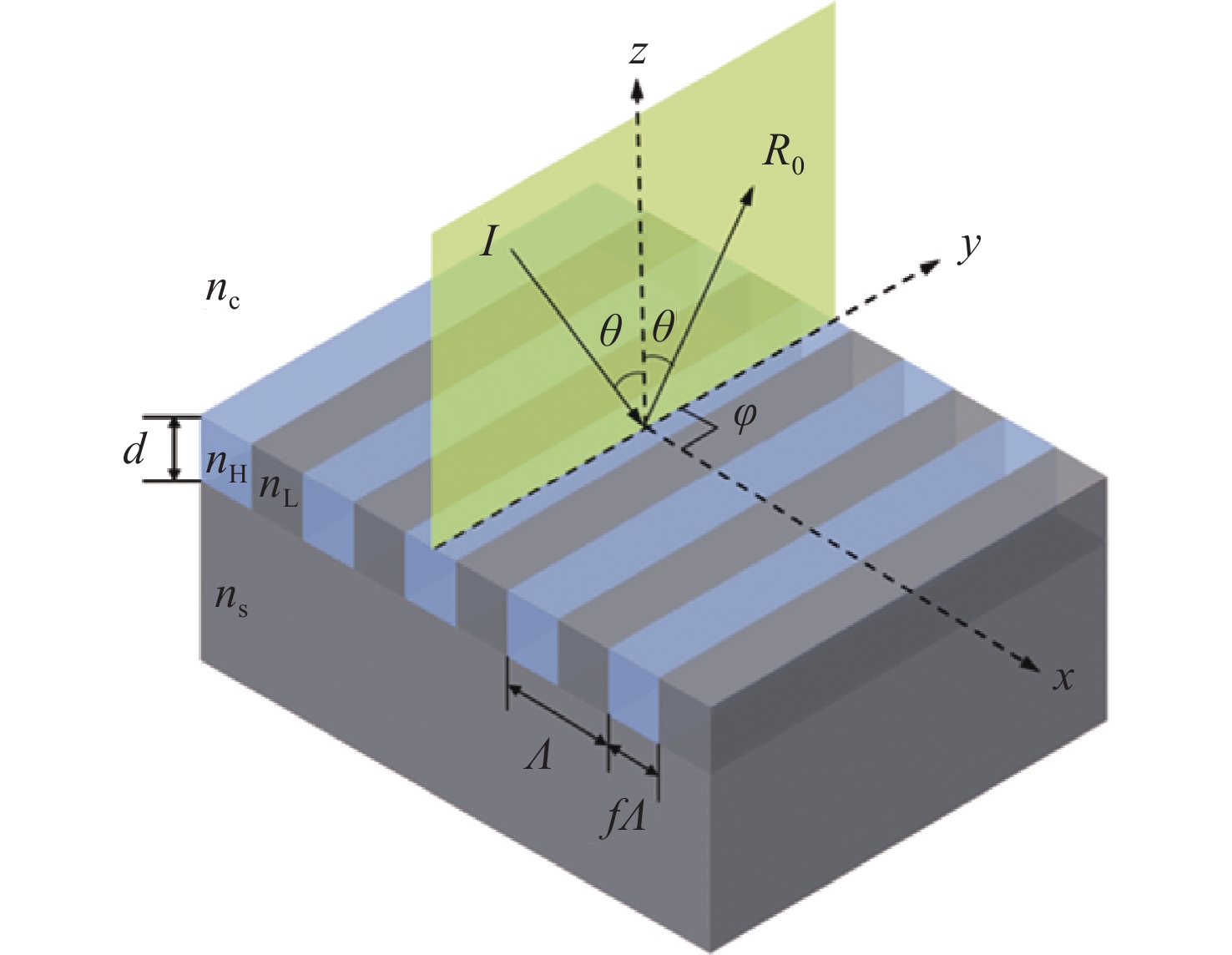
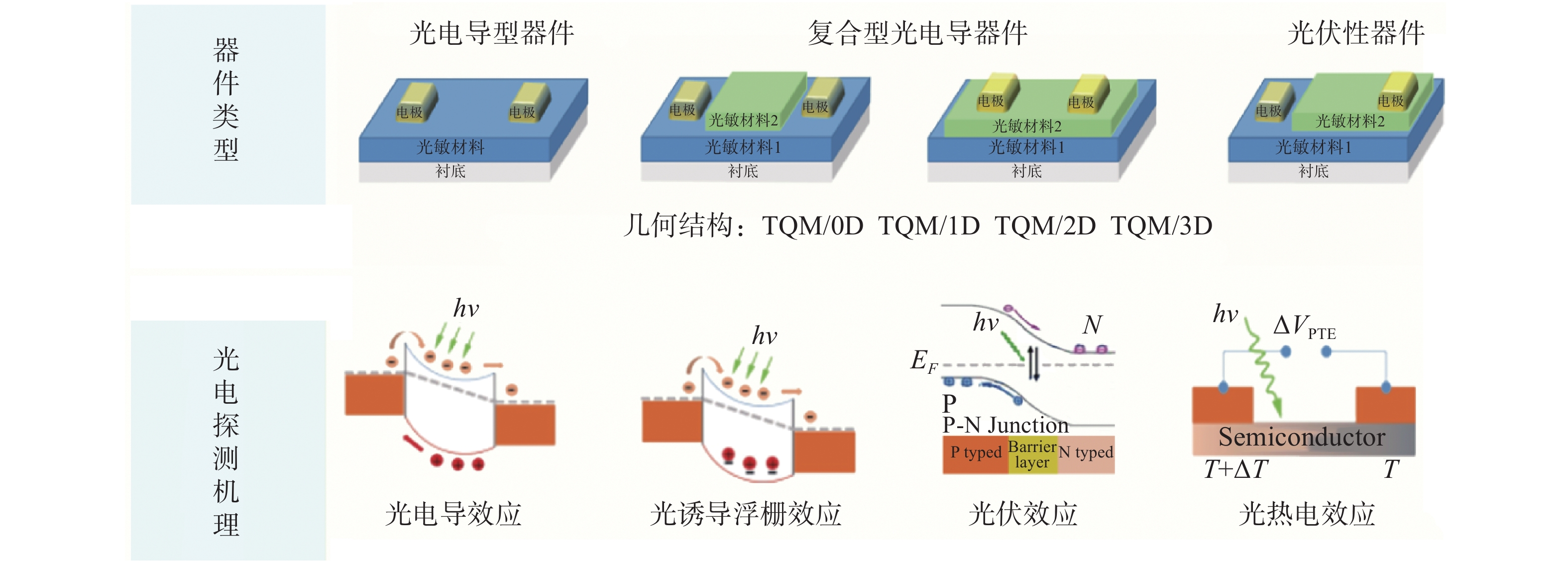



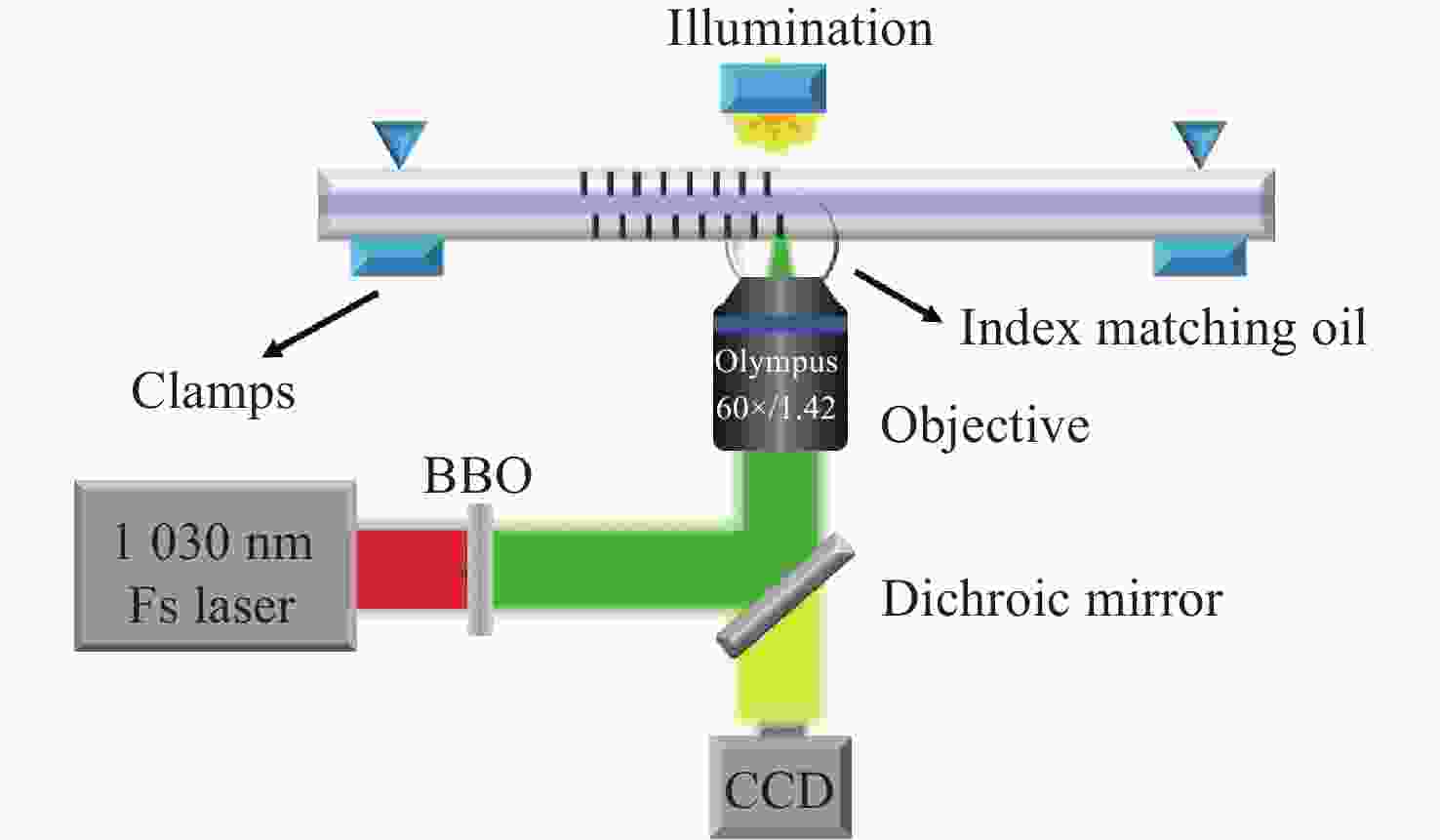
 Abstract
Abstract FullText HTML
FullText HTML PDF 1922KB
PDF 1922KB